Modified protein and method for altering genome of cell
Zheng , et al. April 13, 2
U.S. patent number 10,975,364 [Application Number 16/552,034] was granted by the patent office on 2021-04-13 for modified protein and method for altering genome of cell. This patent grant is currently assigned to City University of Hong Kong. The grantee listed for this patent is City University of Hong Kong. Invention is credited to Jiahai Shi, Yuanyan Tan, Zongli Zheng.
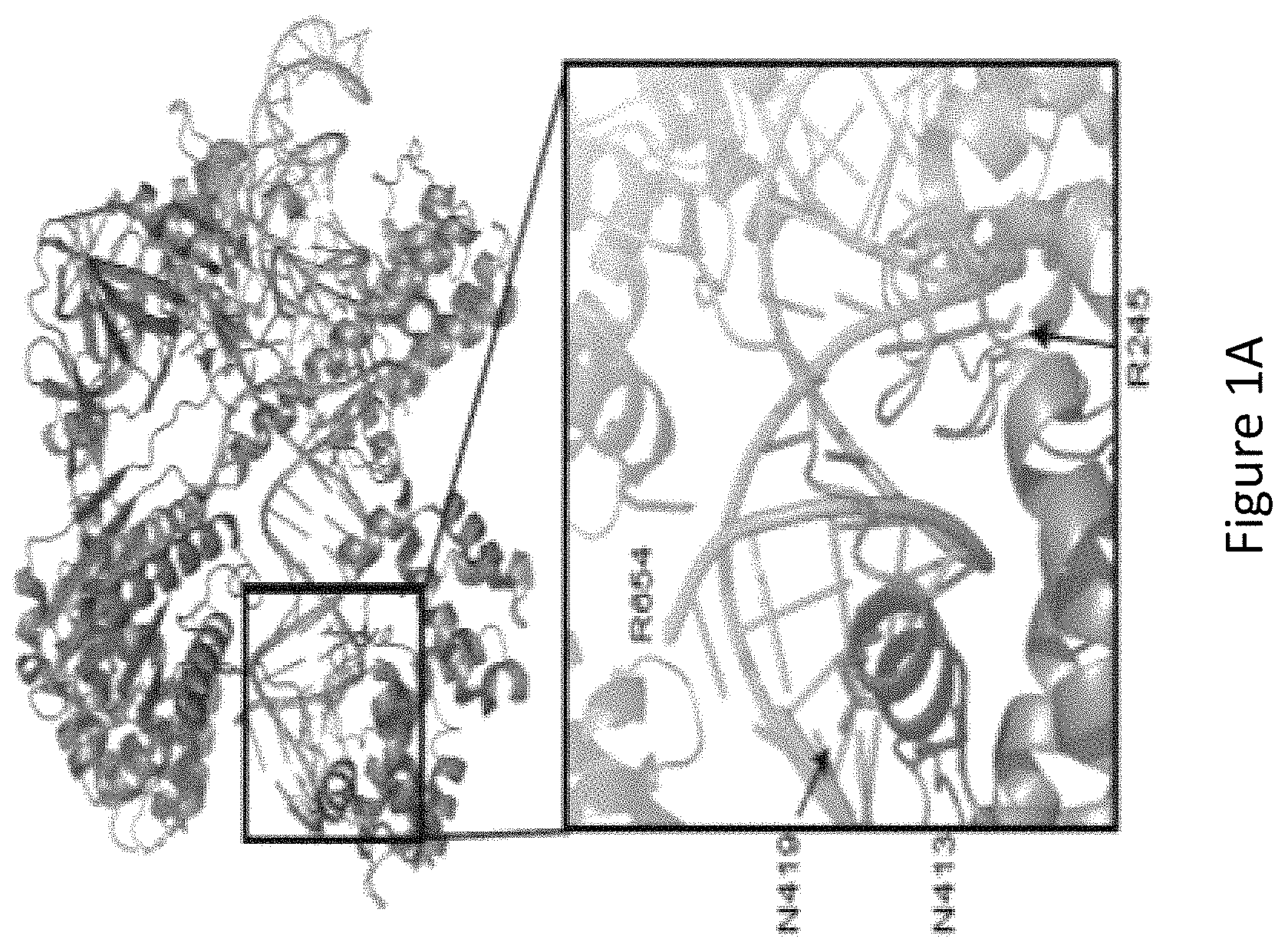
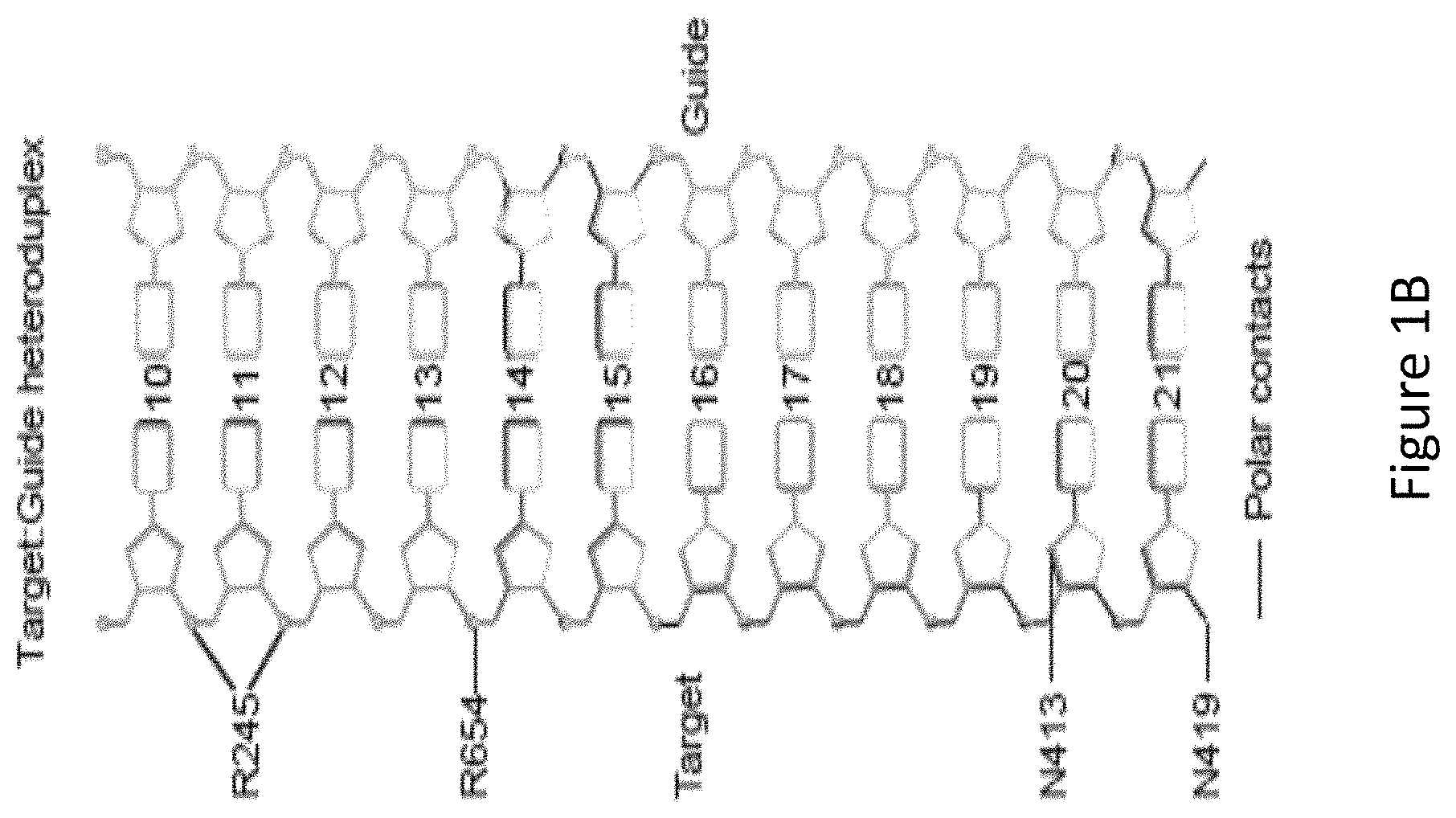
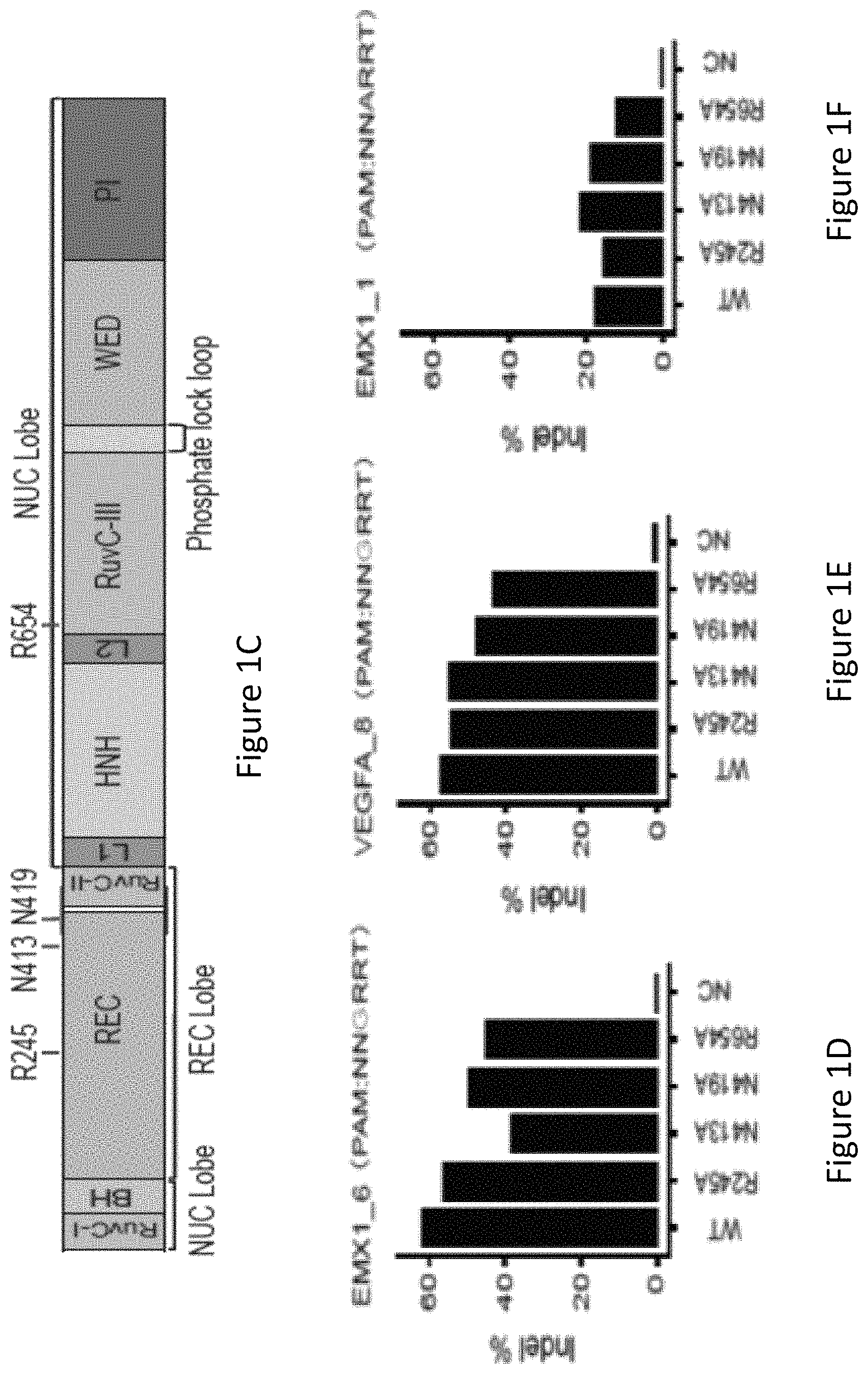
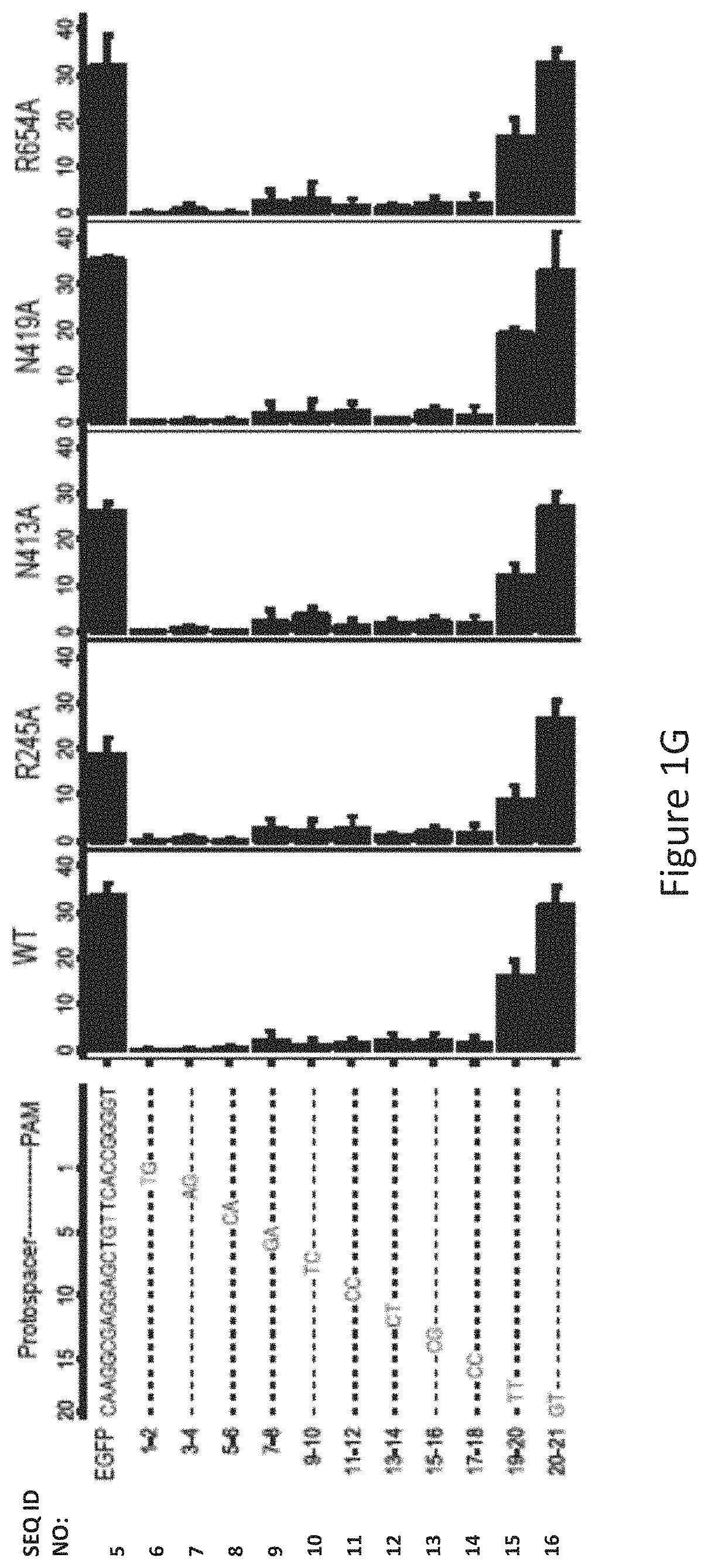
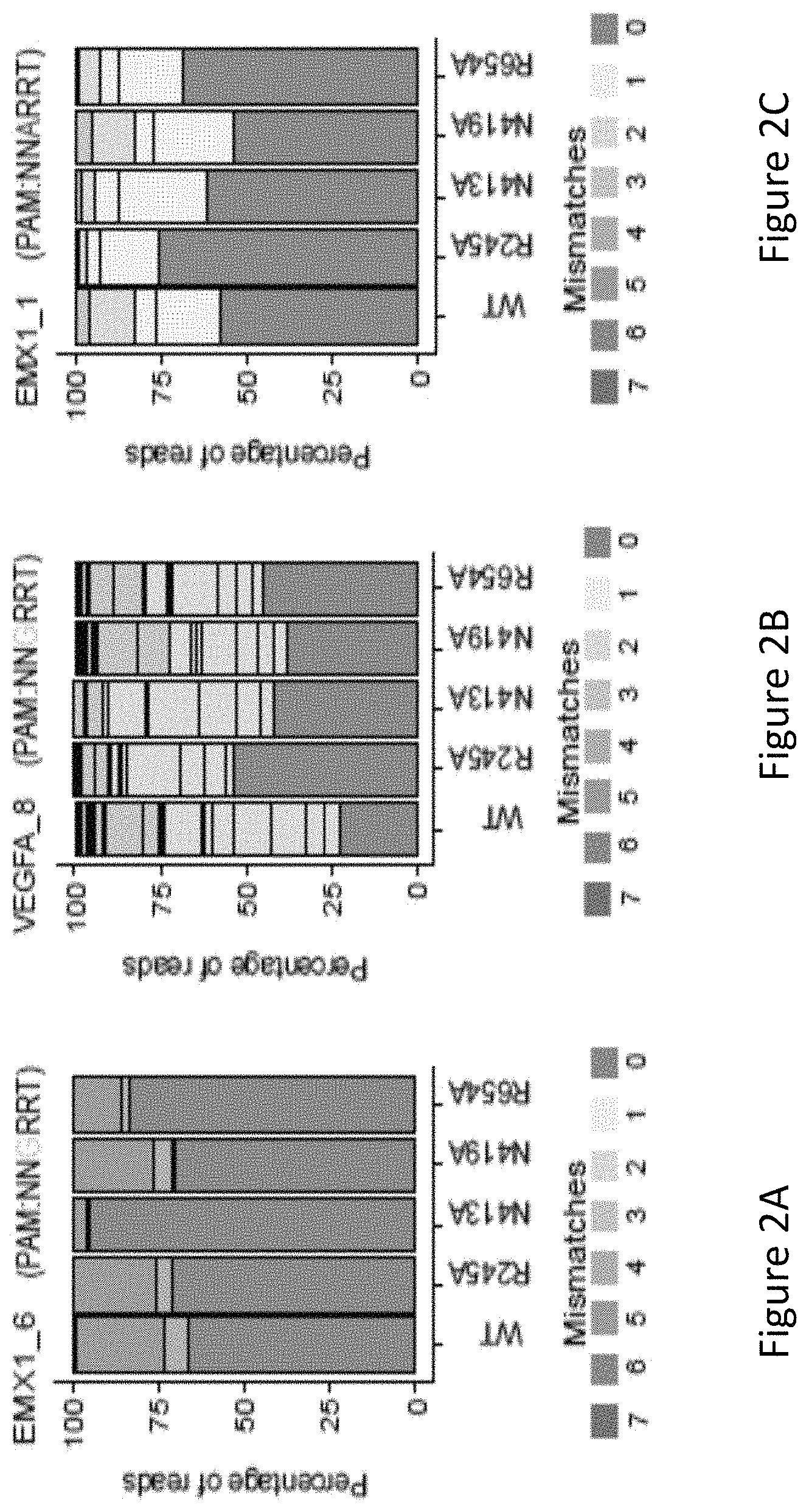
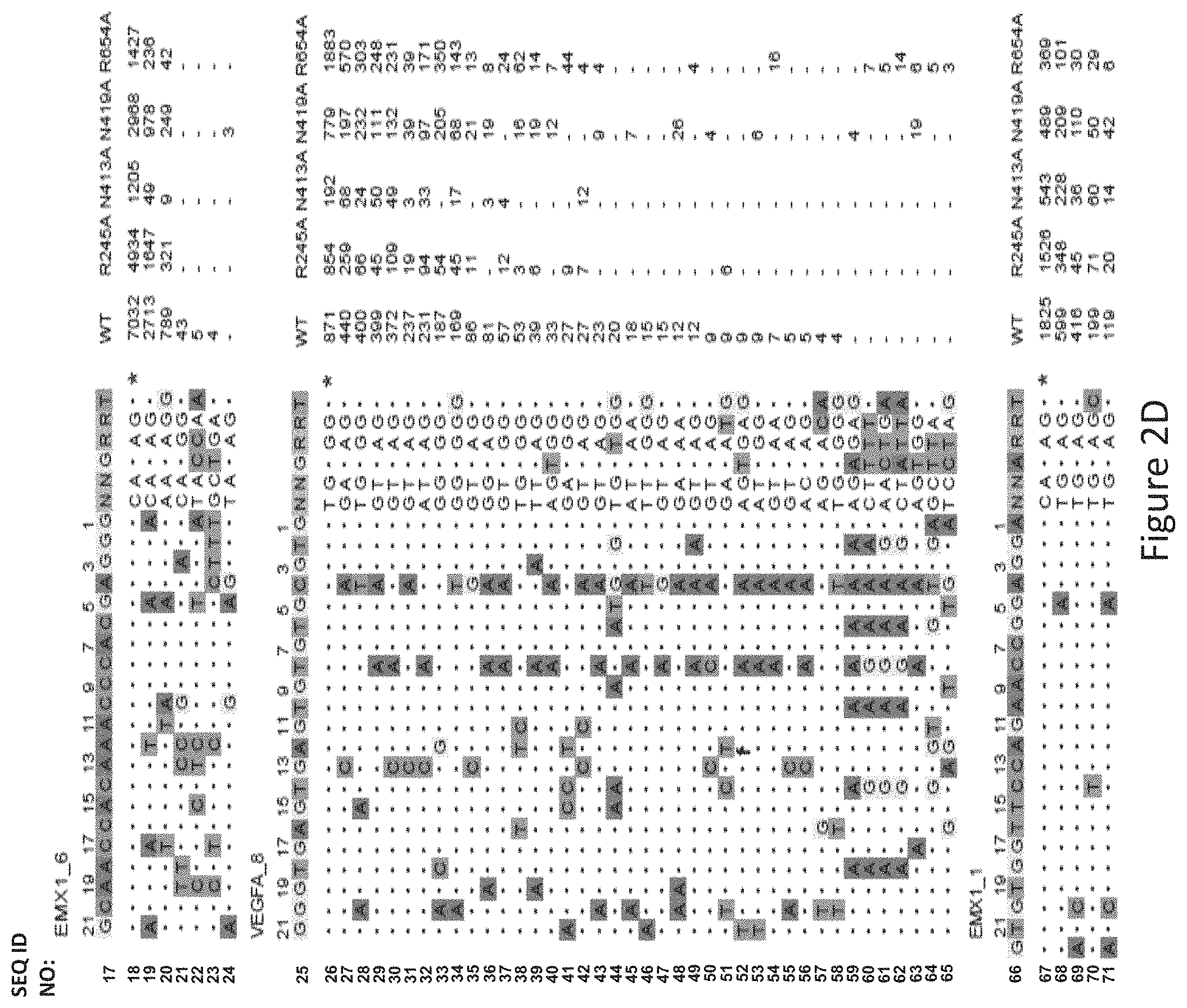
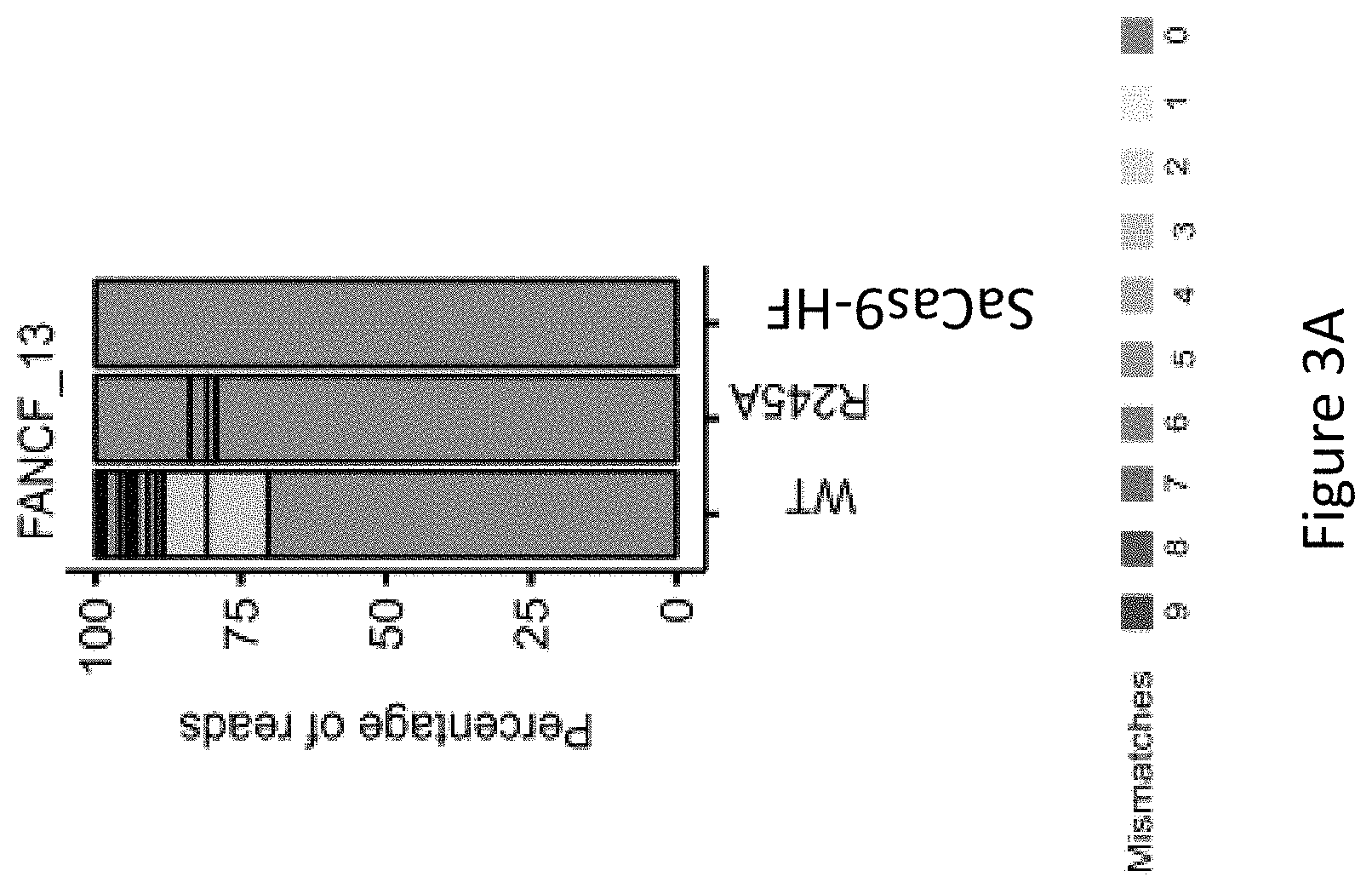
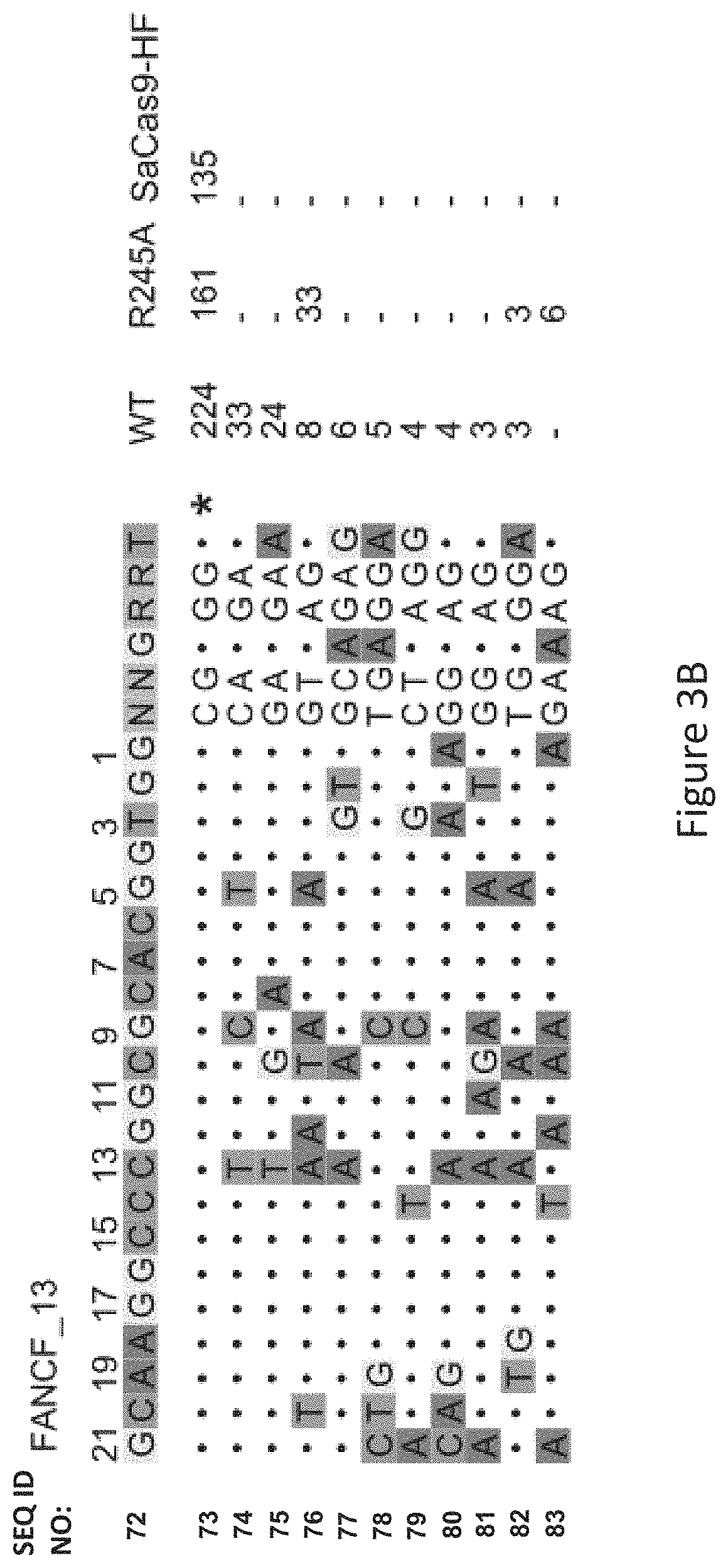
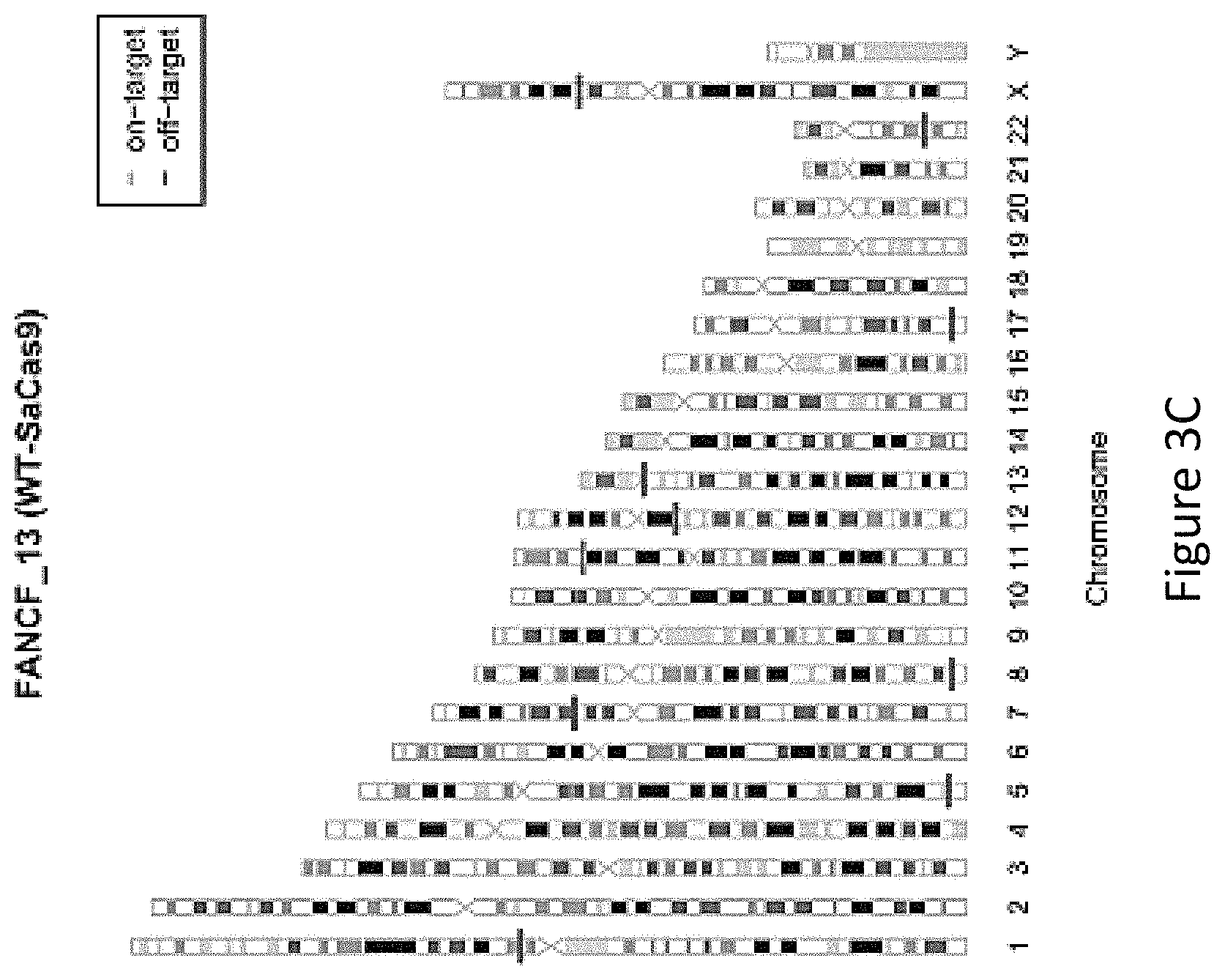
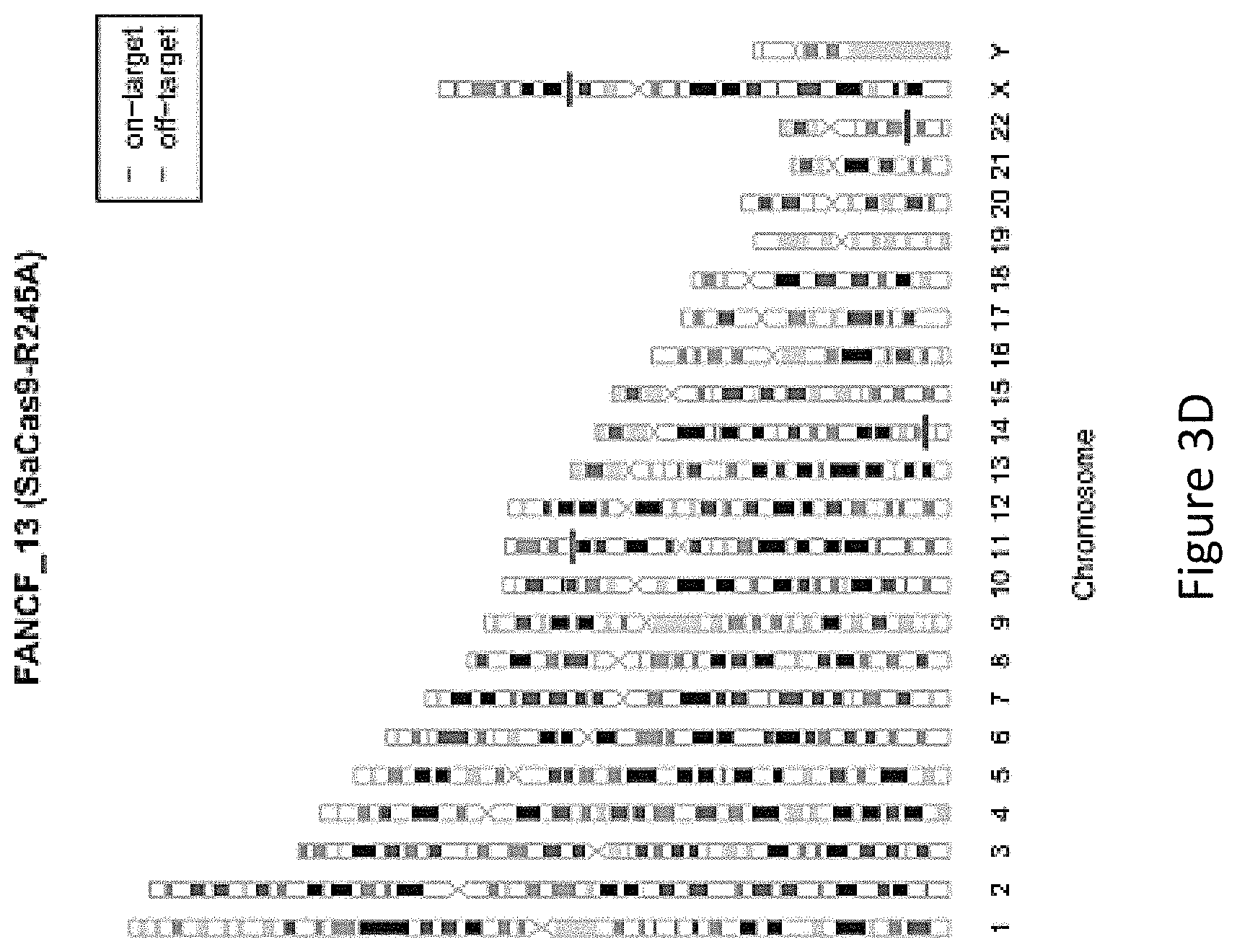
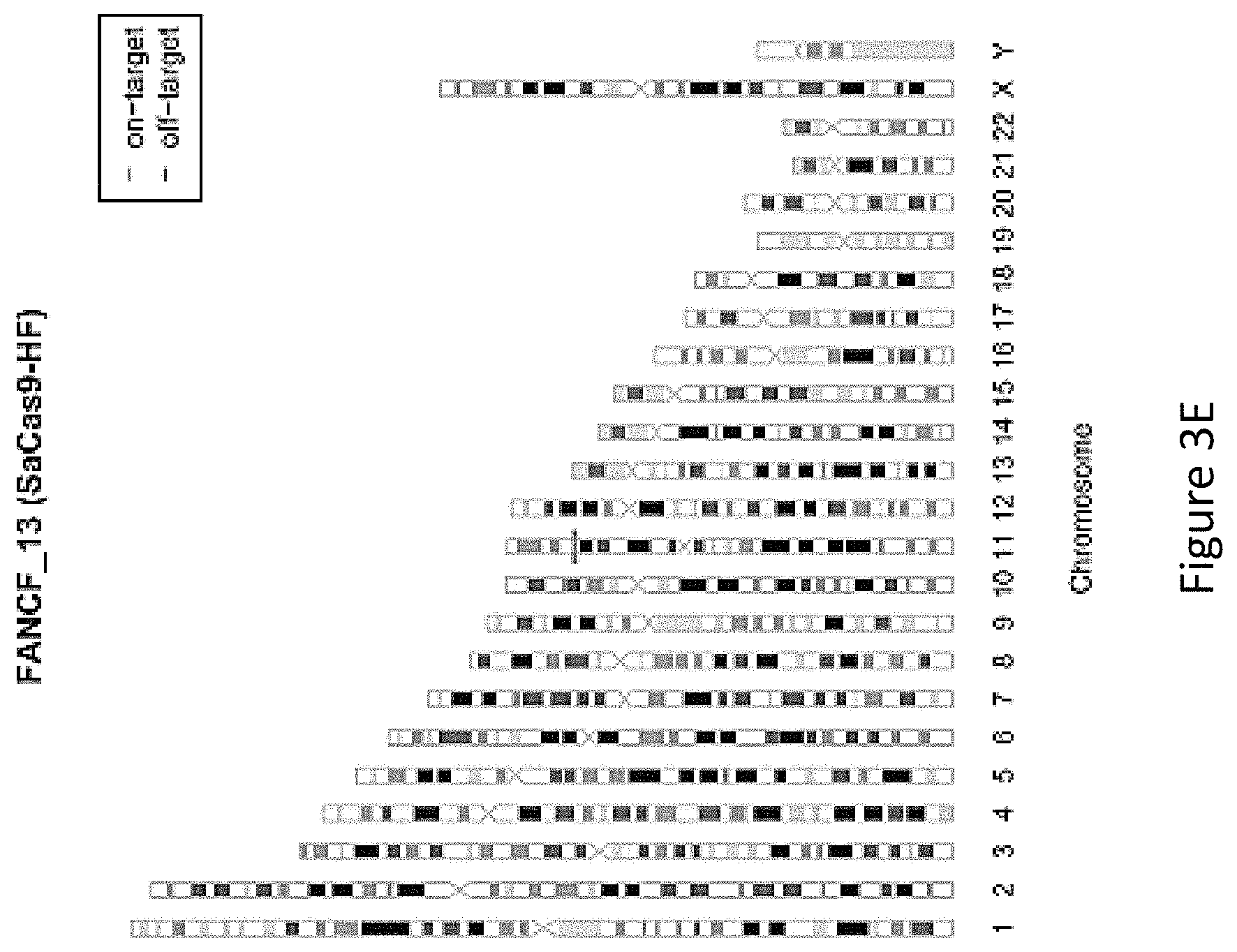
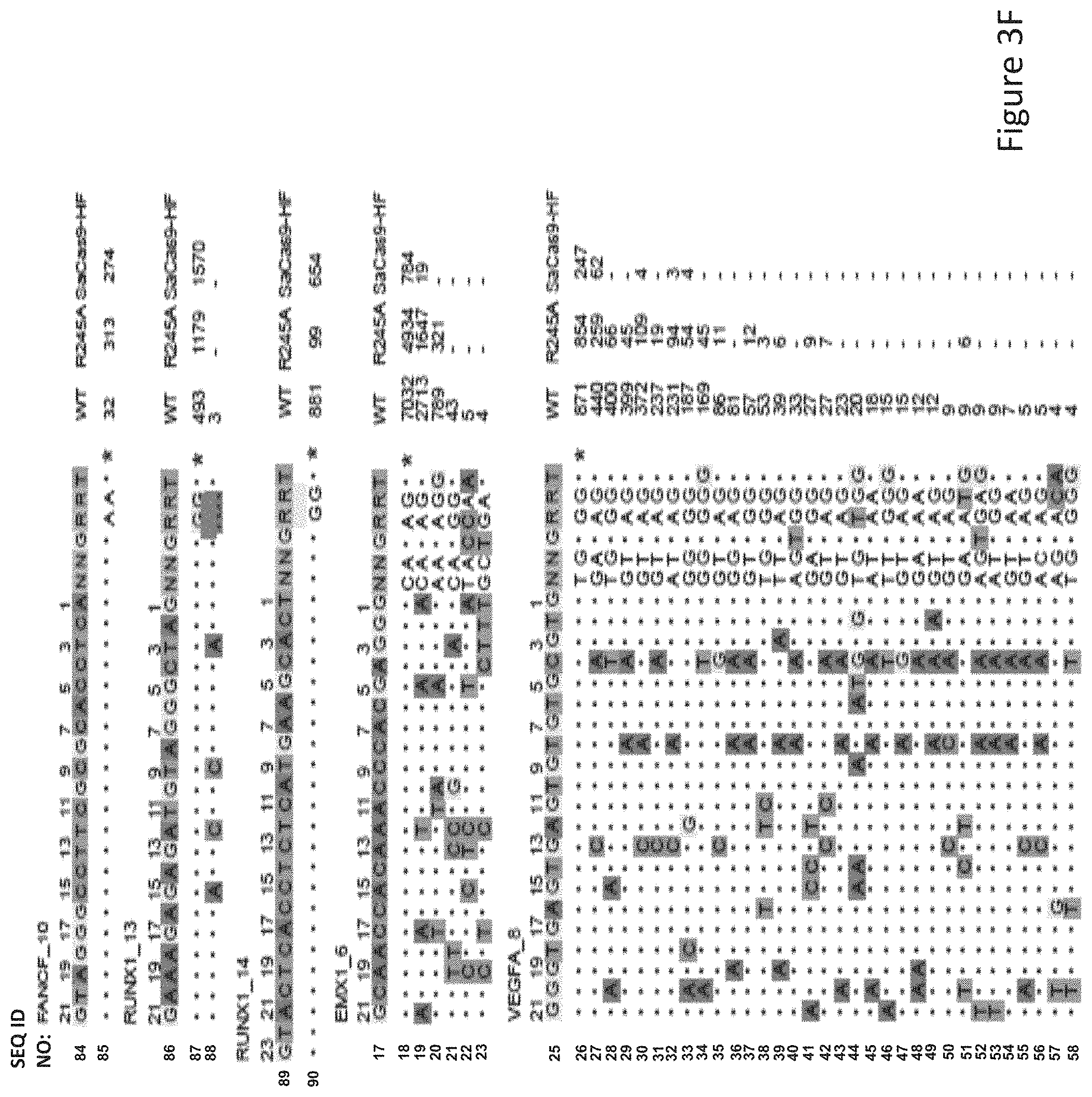
View All Diagrams
| United States Patent | 10,975,364 |
| Zheng , et al. | April 13, 2021 |
Modified protein and method for altering genome of cell
Abstract
A modified Streptococcus aureus Cas9 (SaCas9) protein with a mutation at an N413 position, and optionally one or more of a nuclear localization sequence, a cell penetrating peptide sequence, an affinity tag and/or a fusion base editor protein, and a kit that comprises said modified protein. A method for altering the genome of a cell, the method including the step of using the modified protein of the invention.
| Inventors: | Zheng; Zongli (Kowloon, HK), Shi; Jiahai (Singapore, SG), Tan; Yuanyan (Shatin, HK) | ||||||||||
|---|---|---|---|---|---|---|---|---|---|---|---|
| Applicant: |
|
||||||||||
| Assignee: | City University of Hong Kong
(Kowloon, HK) |
||||||||||
| Family ID: | 1000005484254 | ||||||||||
| Appl. No.: | 16/552,034 | ||||||||||
| Filed: | August 27, 2019 |
Prior Publication Data
| Document Identifier | Publication Date | |
|---|---|---|
| US 20210062169 A1 | Mar 4, 2021 | |
| Current U.S. Class: | 1/1 |
| Current CPC Class: | C12N 15/11 (20130101); C12N 9/22 (20130101); C12N 15/902 (20130101); C12N 2800/80 (20130101); C12N 2310/20 (20170501) |
| Current International Class: | C12N 9/22 (20060101); C12N 15/90 (20060101); C12N 15/11 (20060101) |
References Cited [Referenced By]
U.S. Patent Documents
| 2019/0071657 | March 2019 | Joung et al. |
Other References
|
Broun et al., Catalytic plasticity of fatty acid modification enzymes underlying chemical diversity of plant lipids. Science, 1998, vol. 282: 1315-1317. (Year: 1998). cited by examiner . Chica et al., Semi-rational approaches to engineering enzyme activity: combining the benefits of directed evolution and rational design. Curr. Opi. Biotechnol., 2005, vol. 16: 378-384. (Year: 2005). cited by examiner . Devos et al., Practical limits of function prediction. Proteins: Structure, Function, and Genetics. 2000, vol. 41: 98-107. (Year: 2000). cited by examiner . Seffernick et al., Melamine deaminase and Atrazine chlorohydrolase: 98 percent identical but functionally different. J. Bacteriol., 2001, vol. 183 (8): 2405-2410. (Year: 2001). cited by examiner . Sen et al., Developments in directed evolution for improving enzyme functions. Appl. Biochem. Biotechnol., 2007, vol. 143: 212-223. (Year: 2007). cited by examiner . Whisstock et al., Prediction of protein function from protein sequence. Q. Rev. Biophysics., 2003, vol. 36 (3): 307-340. (Year: 2003). cited by examiner . Witkowski et al., Conversion of b-ketoacyl synthase to a Malonyl Decarboxylase by replacement of the active cysteine with glutamine. Biochemistry, 1999, vol. 38: 11643-11650. (Year: 1999). cited by examiner. |
Primary Examiner: Raghu; Ganapathirama
Attorney, Agent or Firm: Renner Kenner Greive Bobak Taylor & Weber
Claims
The invention claimed is:
1. A modified Streptococcus aureus Cas9 protein with a mutation at an N413 position, and optionally one or more of a nuclear localization sequence, a cell penetrating peptide sequence, an affinity tag or a fusion base editor protein, wherein the modified protein comprises the amino acid sequence selected from SEQ ID NO: 1, SEQ ID NO: 2, SEQ ID NO: 3, SEQ ID NO: 4 or a homologue thereof having at least 90% overall sequence identity to the amino acid sequence.
2. The modified protein of claim 1, wherein the modified protein comprises the amino acid sequence of SEQ ID NO: 1.
3. The modified protein of claim 1, wherein the modified protein comprises the amino acid sequence of SEQ ID NO: 2.
4. The modified protein of claim 1, further comprising one or more mutations at R245, N419 or R654 positions.
5. The modified protein of claim 1, wherein the modified protein comprises the amino acid sequence of SEQ ID NO: 3.
6. The modified protein of claim 3, further comprising mutations at R245, N419 and R654 positions.
7. The modified protein of claim 1, wherein the modified protein comprises the amino acid sequence of SEQ ID NO: 4.
8. The modified protein of claim 1, wherein the modified protein with optionally at least one additional mutation selected from the group consisting of R245, N419 and R654 positions decreases nuclease activity at one or more sites on a target DNA molecule.
9. The modified protein of claim 8, wherein the one or more sites are off-target sites on the target DNA molecule.
10. The modified protein of claim 1, wherein the mutation is a single amino acid substitution.
11. An in vitro method for altering the genome of an isolated host cell, the method comprising the step of using a modified Streptococcus aureus Cas9 protein with a mutation at an N413 position, and optionally one or more of a nuclear localization sequence, a cell penetrating peptide sequence, an affinity tag or a fusion base editor protein, wherein the modified protein comprises the amino acid sequence selected from SEQ ID NO: 1, SEQ ID NO: 2, SEQ ID NO: 3, SEQ ID NO: 4 or a homologue thereof having at least 90% overall sequence identity to the amino acid sequence.
12. The method of claim 11, wherein the modified protein is expressed in the cell or the cell is contacted with the modified protein and a guide RNA having a region complementary to a selected portion of the genome of the cell.
13. The method of claim 11, wherein the modified protein comprises the amino acid sequence of SEQ ID NO: 1.
14. The method of claim 11, wherein the modified protein comprises the amino acid sequence of SEQ ID NO: 2.
15. The method of claim 11, wherein the modified protein further comprises one or more mutations at R245, N419 or R654 positions.
16. The method of claim 11, wherein the modified protein comprises an amino acid sequence of SEQ ID NO: 3.
17. The method of claim 14, wherein the modified protein further comprises one or more mutations at R245, N419 and R654 positions.
18. The method of claim 11, wherein the modified protein comprises the amino acid sequence of SEQ ID NO: 4.
19. The method of claim 11, wherein the modified protein with optionally at least one additional mutation selected from the group consisting of R245, N419 and R654 positions decreases nuclease activity at one or more off-target sites on a target DNA molecule of the cell.
20. The method of claim 11, wherein the mutation is a single amino acid substitution.
21. A kit comprising a modified Streptococcus aureus Cas9 protein with a mutation at an N413 position, and optionally one or more of a nuclear localization sequence, a cell penetrating peptide sequence, an affinity tag or a fusion base editor protein, wherein the modified protein comprises the amino acid sequence selected from SEQ ID NO: 1, SEQ ID NO: 2, SEQ ID NO: 3, SEQ ID NO: 4 or a homologue thereof having at least 90% overall sequence identity to the amino acid sequence.
22. The kit of claim 21, wherein the modified protein comprises the amino acid sequence of SEQ ID NO: 1.
23. The kit of claim 22, wherein the modified protein comprises the amino acid sequence of SEQ ID NO: 2.
24. The kit of claim 21, the modified protein further comprising one or more mutations at R245, N419 or R654 positions.
25. The kit of claim 23, the modified protein further comprising one or more mutations at R245, N419 and R654 positions.
26. The kit of claim 23, wherein the modified protein comprises the amino acid sequence of SEQ ID NO: 3.
27. The kit of claim 23, wherein the modified protein comprises the amino acid sequence of SEQ ID NO: 4.
28. The kit of claim 23, wherein the modified protein comprising optionally at least one additional mutation selected from the group consisting of R245, N419 and R654 decreases nuclease activity at one or more off-target sites on a target DNA molecule.
Description
SEQUENCE LISTING
The Sequence Listing file entitled "mkcp406sequencelisting" having a size of 72,282 bytes and a creation date of Dec. 4, 2020, is incorporated herein by reference in its entirety.
TECHNICAL FIELD
The present invention relates to a modified protein and its use in altering the genome of a cell. Particularly, but not exclusively, the invention relates to a modified Streptococcus aureus Cas9 (SaCas9) protein and its use in genomic engineering, genome targeting and genome editing technologies.
BACKGROUND OF THE INVENTION
Genome engineering technologies have enabled systematic interrogation of genome function and hold great potential for gene therapy. The clustered regularly interspaced short palindromic repeat (CRISPR) associated protein (Cas) system enables efficient DNA modification guided by a complementary RNA and in the presence of a protospacer adjacent motif (PAM). However, non-perfect guide-RNA-target-DNA matching has been known to occur which can result in modifications at genomic loci other than the intended locus. This off-target activity can limit the broad application of this technology. Accordingly, modified proteins for altering the genome of a cell with application in genome editing and gene therapy are desired.
SUMMARY OF THE INVENTION
In a first aspect, the invention provides a modified protein. Preferably, the modified protein is a Streptococcus aureus Cas9 (SaCas9) protein with a mutation at an N413 position, and optionally one or more of a nuclear localization sequence, a cell penetrating peptide sequence, an affinity tag and/or a fusion base editor protein.
In an embodiment, the modified protein comprises an amino acid sequence as defined in SEQ ID NO: 1 or a homologue thereof.
In an embodiment, the modified protein comprises an amino acid sequence as defined in SEQ ID NO: 2 or a homologue thereof.
In an embodiment, the modified protein further comprises one or more mutations at R245, N419 and/or R654 positions.
In an embodiment, the modified protein comprises an amino acid sequence as defined in SEQ ID NO: 3 or a homologue thereof.
In an embodiment, the modified protein comprises an amino acid sequence as defined in SEQ ID NO: 4 or a homologue thereof.
In an embodiment, the modified protein with optionally at least one additional mutation selected from the group consisting of R245, N419 and R654 positions decreases nuclease activity at one or more sites on a target DNA molecule.
In an embodiment, the one or more sites are off-target sites on the target DNA molecule.
In an embodiment, the mutation is a single amino acid substitution.
In an embodiment, the modified protein comprises alanine at the N413 position. In an embodiment, the modified protein comprises alanine at the N413, R245, N419 and/or R654 position.
In a second aspect, the invention pertains to a method for altering a genome of a cell. The method comprises the step of using the modified protein.
In an embodiment, the modified protein is expressed in the cell, or the cell is contacted with the modified protein and a guide RNA having a region complementary to a selected portion of the genome of the cell.
In a third aspect, the invention pertains to a kit comprising the modified protein. In an embodiment, the kit comprises a modified Streptococcus aureus Cas9 (SaCas9) protein with a mutation at an N413 position, and optionally one or more of a nuclear localization sequence, a cell penetrating peptide sequence, an affinity tag and/or a fusion base editor protein.
In an embodiment, the modified protein comprises an amino acid sequence as defined in SEQ ID NO: 1 or a homologue thereof. In a further embodiment, the modified protein comprises an amino acid sequence as defined in SEQ ID NO: 2 or a homologue thereof.
In an embodiment, the modified protein comprising a sequence as defined in SEQ ID NO: 1 or SEQ ID NO: 2 or a homologue thereof further comprises one or more mutations at R245, N419 and/or R654 positions.
In an embodiment, the modified protein further comprises mutations at R245, N419 and R654 positions, preferably the modified protein comprises an amino acid sequence as defined in SEQ ID NO: 3 or a homologue thereof.
In an embodiment, the modified protein further comprises mutations at R245, N419 and R654 positions, preferably the modified protein comprises an amino acid sequence as defined in SEQ ID NO: 4 or a homologue thereof.
In an embodiment, the mutation is a single amino acid substitution.
In an embodiment, the modified protein comprises alanine at the N413 position. In a further embodiment, the modified protein comprises alanine at the N413, R245, N419 and/or R654 positions.
Accordingly, the invention provides a novel and effective modified protein for altering the genome of a cell with application in genome editing and gene therapy. The modified protein of the invention, specifically the modified Streptococcus aureus Cas9 (SaCas9) protein with a mutation at an N413 position, confers high genome-wide specificity and retains high editing efficiency. The provision of the modified SaCas9 protein of the present invention and a guide RNA (gRNA) establishes a gene-editing system in a cell. The Cas9 protein is guided by the gRNA to cut a target gene at a specific location on a target DNA molecule of a cell. The application of the modified SaCas9 protein of the invention advantageously decreases nuclease activity at one or more off-target positions on a target DNA molecule thereby enabling genome-editing applications with high genome-wide precision. This results in significant reductions of off-target activity and improved specificity of the SaCas9 protein. The modified protein and the related kit comprising it are also parts of the invention.
Those skilled in the art will appreciate that the invention described herein is susceptible to variations and modifications other than those specifically described. The invention includes all such variations and modifications. The invention also includes all steps and features referred to or indicated in the specification, individually or collectively, and any and all combinations of the steps or features.
Other features and aspects of the invention will become apparent by consideration of the following detailed description and accompanying drawings.
BRIEF DESCRIPTION OF THE DRAWINGS
FIG. 1A is a figure of a crystal structure of wild-type Streptococcus aureus Cas9 (SaCas9) interacting with a guide RNA (gRNA)-target DNA heteroduplex. A magnified structure of the active site shows the amino acid residues at the R245, N413, N419 and R654 (in red) positions (also known as amino acid residues R245, N413, N419 and R654) that form polar contacts within 3.0 .ANG. distance from the target DNA (in green).
FIG. 1B is a diagram showing SaCas9 amino acid residues in contact with the gRNA-target DNA heteroduplex labeled with protospacer positions, with 21 being most proximal to the protospacer adjacent motif (PAM) on the target DNA.
FIG. 1C is a diagram showing the structural domains of SaCas9 and the positions of four amino acid residues, R245, N413, N419 and R654.
FIG. 1D is a bar graph showing the percentage of insertions or deletions of bases (indels) on human endogenous site EMX1_6 in HEK293T cells using wild-type SaCas9 (WT), single amino acid substitution SaCas9 modified proteins R245A, N413A, N419A and R654A, and a no-Cas9 negative control (NC).
FIG. 1E is a bar graph showing the percentage of indels on human endogenous site VEGFA_8 in HEK293T cells using wild-type SaCas9 (WT), single amino acid substitution SaCas9 modified proteins R245A, N413A, N419A and R654A, and a no-Cas9 negative control (NC).
FIG. 1F is a bar graph showing the percentage of indels on human endogenous site EMX1_1 in HEK293T cells using wild-type SaCas9 (WT), single amino acid substitution SaCas9 modified proteins R245A, N413A, N419A and R654A, and a no-Cas9 negative control (NC).
FIG. 1G shows human cell EGFP disruption activities of wild-type SaCas9 (WT) and SaCas9 modified proteins R245A, N413A, N419A and R654A using target protospacer matched or mis-matched gRNA.
FIG. 2A is a bar graph showing the percentage of edited reads detected by GUIDE-seq at on-target site (green) and off-target sites (ordered by number of mismatches from 1 to 7) among total edited reads by VVT SaCas9 and SaCas9 modified proteins R245A, N413A, N419A and R654A at EMX1_6.
FIG. 2B is a bar graph showing the percentage of edited reads detected by GUIDE-seq at on-target site (green) and off-target sites (ordered by number of mismatches from 1 to 7) among total edited reads by VVT SaCas9 and SaCas9 modified proteins R245A, N413A, N419A and R654A at VEGFA_8.
FIG. 2C is a bar graph showing the percentage of edited reads detected by GUIDE-seq at on-target site (green) and off-target sites (ordered by number of mismatches from 1 to 7) among total edited reads by VVT SaCas9 and SaCas9 modified proteins R245A, N413A, N419A and R654A at EMX1_1.
FIG. 2D shows genome-wide cleavage sites detected by GUIDE-Seq on EMX1_6, VEGFA_8 and EMX1_1. Read counts listed on the right represent the number of GUIDE-Seq reads; on-target site is indicated by "*" and mismatched bases in off-target sites with the on-target site are highlighted.
FIG. 3A is a bar graph showing the percentage of edited reads detected by GUIDE-seq at on-target site (green) and off-target sites (ordered by number of mismatches from 1 to 9) by wild-type SaCas9 (WT), SaCas9 modified protein R245A (i.e. with a mutation at position R245), and SaCas9 modified protein HF with mutations at positions R245, N413, N419 and R654A (SaCas9-HF) at FANCF_13, i.e. modified Cas9 protein comprising an amino acid sequence as defined in SEQ ID NO: 3.
FIG. 3B shows genome-wide cleavage sites detected by GUIDE-seq on FANCF_13. Read counts listed on the right represent the number of GUIDE-Seq reads; on-target site is indicated by "*" and mismatched bases in off-target sites with the on-target site are highlighted.
FIG. 3C shows on-target and off-target cleavages detected by GUIDE-Seq of wild-type SaCas9 (WT).
FIG. 3D shows on-target and off-target cleavages detected by GUIDE-Seq of SaCas9 modified protein R245A.
FIG. 3E shows on-target and off-target cleavages detected by GUIDE-Seq of SaCas9 modified protein SaCas9-HF with mutations at positions R245, N413, N419 and R654, i.e. modified Cas9 protein comprising an amino acid sequence as defined in SEQ ID NO: 3.
FIG. 3F shows genome-wide cleavage sites detected by GUIDE-Seq at canonical NNGRRT PAM sites.
FIG. 3G shows genome-wide cleavage sites detected by GUIDE-Seq at non-canonical NNNRRT PAM sites.
FIG. 4A is a bar graph showing the number of off-target sites identified at EMX1_6, FANCF_13 and VEGFA_8 using GUIDE-Seq by different SaCas9 residue mutation combinations.
FIG. 4B is a bar graph showing the percentage of edited reads detected by GUIDE-Seq at on-target site (in green) and off-target sites (ordered by the number of mismatches from 1 to 7) among total edited reads by each SaCas9 modified protein.
FIG. 5A is a venn diagram comparing the number of off-target sites between a modified protein comprising mutations at E782, N968 and R1015 positions (indicated as "KKH" in the figure) and a modified protein with mutations at E782, N968, R1015, R245, N413, N419 and R654 positions comprising an amino acid sequence as defined in SEQ ID NO: 4 (KKH-SaCas9-HF, indicated as KKH-HF in the figure) when targeting six sites including EMX1_6, RUNX1_13, RUNX1_14, FANCF_10, FANCF_13, VEGFA_8 with canonical NNGRRT PAM.
FIG. 5B shows GUIDE-Seq detected cleavage sites by a modified protein comprising mutations at E782, N968 and R1015 positions (indicated as "KKH" in the figure) and a modified protein with mutations at E782, N968, R1015, R245, N413, N419 and R654 positions comprising an amino acid sequence as defined in SEQ ID NO: 4 (KKH-SaCas9-HF, indicated as "KKH-HF" in the figure) when targeting six sites with canonical NNGRRT PAM. Read counts listed on the right represent the number of GUIDE-Seq reads. On-target site is indicated with "*". Mismatched bases in off-target sites with the on-target site are highlighted.
FIG. 5C is a venn diagram comparing the number of off-target sites between a modified protein comprising mutations at E782, N968 and R1015 positions (indicated as "KKH" in the figure) and a modified protein with mutations at E782, N968, R1015, R245, N413, N419 and R654 positions comprising an amino acid sequence as defined in SEQ ID NO: 4 (KKH-SaCas9-HF, indicated as "KKH-HF" in the figure) when targeting five sites including EMX1_1, EMX1_4, EMX1_10, FANCF_9 and FANCF_16 with non-canonical NNNRRT PAM.
FIG. 5D shows GUIDE-Seq detected cleavage sites by a modified protein comprising mutations at E782, N968 and R1015 positions (indicated as "KKH" in the figure) and a modified protein with mutations at E782, N968, R1015, R245, N413, N419 and R654 positions comprising an amino acid sequence as defined in SEQ ID NO: 4 (KKH-SaCas9-HF, indicated as "KKH-HF" in the figure) when targeting six sites with non-canonical NNNRRT PAM. Read counts listed on the right represent the number of GUIDE-Seq reads. On-target site is indicated with "*". Mismatched bases in off-target sites with the on-target site are highlighted.
DETAILED DESCRIPTION OF THE EMBODIMENTS
Unless otherwise defined, all technical terms used herein have the same meaning as commonly understood by one skilled in the art to which the invention belongs.
As used herein, "comprising" means including the following elements but not excluding others. "Essentially consisting of" means that the material consists of the respective element along with usually and unavoidable impurities such as side products and components usually resulting from the respective preparation or method for obtaining the material such as traces of further components or solvents. "Consisting of" means that the material solely consists of, i.e. is formed by the respective element. As used herein, the forms "a," "an," and "the," are intended to include the singular and plural forms unless the context clearly indicates otherwise.
The present invention relates to a modified protein and its use in altering the genome of a cell. Particularly, the invention relates to a modified Streptococcus aureus Cas9 (SaCas9) protein and its use in genomic engineering, genome targeting and genome editing technologies. For example, one of the applications of the modified proteins is as RNA-guided clustered, regularly interspaced, short palindromic repeats (CRISPR)-Cas9 proteins, for example a SaCas9 modified protein. A limitation of CRISPR-SaCas9 proteins that restricts broad application are their activities on off-target sites with the potential to induce undesired off-target mutations and disrupt the functionality of otherwise normal genes.
The provision of the modified SaCas9 protein of the present invention and a guide RNA (gRNA) establishes a gene-editing system in a cell. CRISPR-SaCas9 proteins, guided by the gRNA, bind and cleave a predetermined target sequence of a target gene at a specific location, i.e. an on-target site, on a target DNA molecule, thereby resulting in a double stranded chromosomal break at the on-target site that leads to site-specific modifications by the cell. The "target gene" as used herein refers to a gene of interest. The Cas9 protein recognizes a short DNA sequence, the protospacer adjustment motif (PAM), found downstream of the target sequence, usually three to four nucleotides downstream from the cut site. The PAM sequence is an essential component of the CRISPR-Cas9 system and the Cas9 protein will not bind to or cleave the target DNA sequence without the downstream PAM sequence. The SaCas9 protein, for example, recognizes the canonical PAM sequence NNGRRT or the non-canonical PAM sequence NNNRRT.
Non-specific binding at locations other than the target sequence, i.e. at off-target sites, of the CRISPR-Cas9 has been known to occur, thus resulting in cleaving of off-target sequences and causing non-specific genetic modifications. The inventors have found that the number of mismatched bases in the guide RNA-target DNA heteroduplex at a PAM-distal region (for example, positions 10 to 20 from the PAM) may be inversely correlated with the proportion of SaCas9 in an activated state and that wild-type SaCas9 amino acid residues in proximity of the guide RNA-target DNA heteroduplex could lower the threshold for activating the Cas9 nuclease domain, thus resulting in potentially more binding at off-target sites.
The modified protein as described herein advantageously provides an improved Cas9 protein with reduced nuclease activity at one or more sites on a target DNA molecule, specifically at one or more off-target sites on a target DNA molecule, such that off-target activities and undesired off-target mutations on the target DNA molecule are reduced. The term "off-target sites" as used herein refers to non-specific binding of the modified protein at locations other than the predetermined target sequence. The term "on-target sites" used herein refers to binding of the modified protein at the predetermined target sequence. On-target and off-target site binding may be compared at various target sites, for example human endogenous sites. The target sites include, but are not limited to, EMX1_6, EMX1_1, EMX1_4, EMX1_10, VEGFA_8, FANCF_13, FANCF_10, FANCF_9, FANCF_16, RUNX1_13, and RUNX1_14.
The present invention in the first aspect provides a modified Cas9 protein with a mutation at an N413 position, i.e. a mutation of the amino acid at N413, and optionally one or more of a nuclear localization sequence, a cell penetrating peptide sequence, an affinity tag and/or a fusion base editor protein. Preferably, the modified protein is a Streptococcus aureus Cas9 protein. A mutation of an amino acid alters the amino acid to an amino acid other than the wild-type amino acid. Alternatively, a mutation may be resulted from a deletion of an amino acid residue in the amino acid sequence or an addition of one or more amino acid residues into the amino acid sequence, thereby altering the binding activity between the amino acid sequence and the target sequence. In an example embodiment, the mutation is a single amino acid substitution whereby the wild-type amino acid is changed to any amino acid other than the wild-type amino acid. In a preferred embodiment, the mutation changes the wild-type amino acid to alanine.
In an example embodiment, the modified Cas9 protein includes an amino acid sequence as defined in SEQ ID NO: 1 or a homologue thereof wherein the modified protein comprising the amino acid sequence includes a mutation at an N413 position. In a preferred embodiment, the modified protein comprising or consisting of the amino acid sequence includes an alanine at the N413 position.
In another example embodiment, the modified protein includes an amino acid sequence as defined in SEQ ID NO: 2 or a homologue thereof wherein the modified protein comprising or consisting of the amino acid sequence includes three E782K, N968K, R1015H substitutions and a mutation at an N413 position. In a preferred embodiment, the modified protein comprising or consisting of the amino acid sequence includes an alanine at the N413 position.
In some embodiments, the modified protein includes one, two, or three mutations at the R245, N419 or R654 positions in addition to a mutation at the N413 position. For example, the modified protein may include one or more mutations at R245 and/or N419 and a further mutation at R654. In a preferred embodiment, the modified protein comprises an amino acid sequence as defined in SEQ ID NO: 3 or a homologue thereof and includes a mutation at N413, N419, R245 and R654 positions, also referred to as SaCas9-HF. In an embodiment, the mutation at one or more of the N413, N419, R245 and/or R654 positions is a single amino acid substitution. In a preferred embodiment, the modified protein comprising or consisting of the amino acid sequence includes an alanine at the N413, N419, R245 and/or R654 positions.
In an embodiment, the modified protein includes one, two, or all three of the following mutations at the R245, N419 or R654 positions and three E782K,N968K and R1015H mutations and a mutation at an N413 position. In a particular embodiment, the modified protein comprises an amino acid sequence as defined in SEQ ID NO: 4 of a homologue thereof wherein the modified protein includes mutations at the N413, N419, R245 and R654 positions and three E782K,N968K,R1015H mutations, also referred to as KKH-SaCas9-HF. In an embodiment, the mutation at one or more of the N413, N419, R245 and/or R654 positions is a single amino acid substitution. Preferably, the modified protein comprising or consisting of the amino acid sequence includes an alanine at the N413, N419, R245 and/or R654 positions.
The term "homologue" used herein refers to amino acids having a sequence identity of at least 50%, at least 60%, at least 70%, at least 80%, at least 90% or at least 95% to the modified protein according to the present invention. In an embodiment, the homologue of the modified protein has at least 90%, 91%, 92%, 93%, 94%, 95%, 96%, 97%, 98%, or 99% overall sequence identity to the modified protein. In a particular embodiment, the modified protein consists of a sequence of SEQ ID NO: 1, SEQ ID NO: 2, SEQ ID NO: 3, SEQ ID NO: 4 or a homologue thereof.
The term `cell penetrating peptides` used herein refers to peptides that facilitate the movement of a wide range of biomolecules across the cell membrane into the cytoplasm or an organelle. Examples of biomolecules that cell penetrating peptides can deliver include, but are not limited to, plasmid DNA, oligonucleotides, nanoparticles, peptide-nucleic acid (PNA), siRNA, proteins, peptides and/or liposomes. Examples of cell penetrating peptides commonly used in the art include trans-activating transcriptional activator (TAT), penetratin, etc. The modified protein of the present invention can include a cell penetrating peptide sequence.
The term `nuclear localization sequence` used herein refers to amino acid sequence that facilitates the transport of proteins into the nucleus of a cell. Examples known in the art include SV40 large T antigen NLS and nucleoplasmin NLS. The modified protein of the present invention can include, alternatively or in addition to the cell penetrating peptide sequence, a nuclear localization sequence.
The term `affinity tag` as used herein facilitates the purification of recombinant modified proteins, for example GST, FLAG or hexahistidine sequences. The term `fusion base editor protein` as used herein refers to proteins that enable the direct conversion or editing of bases.
In a preferred embodiment, the modified protein with a mutation at the N413 position and at least one additional mutation at the R245, N419 and/or R654 positions decrease nuclease activity at one or more sites on a target DNA molecule. In a preferred embodiment, the sites are off-target sites. Preferably, the mutation changes the wild-type amino acid to alanine.
The modified SaCas9 protein of the present invention is derived from an isolated SaCas9 protein. The isolated SaCas9 protein may be commercially available or artificially synthesized. The isolated SaCas9 protein is then subject to amino acid modification particularly at the N413 position, under suitable conditions, to produce the modified SaCas9 protein as described above. The modified SaCas9 protein may be provided in a kit which is suitable for altering the genome of a cell or a subject. Accordingly, the present invention also pertains to a kit comprising the modified protein as described above.
In an embodiment, the kit includes a modified Cas9 protein with a mutation at an N413 position, and optionally one or more of a nuclear localization sequence, a cell penetrating peptide sequence, an affinity tag and/or a fusion base editor protein. In one embodiment, the modified protein includes an amino acid sequence as defined in SEQ ID NO: 1 or a homologue thereof wherein the modified protein comprising the amino acid sequence includes a mutation at an N413 position.
In a further embodiment, the modified protein with a mutation at an N413 position further includes one or more mutations at the R245, N419 or R654 positions. In a particular embodiment, the modified protein comprises an amino acid sequence as defined in SEQ ID NO: 3 or a homologue thereof that includes a mutation at N413, N419, R245 and R654 positions. In a preferred embodiment, the mutation is a single amino acid substitution. In another preferred embodiment, the modified protein includes an alanine at the N413 position, and/or optionally at the N419, R245 and R654 positions.
In some embodiments, the modified protein with a mutation at an N413 position further includes three E782K, N968K and R1015H mutations. In a particular embodiment, the modified protein includes an amino acid sequence as defined in SEQ ID NO: 2 or a homologue thereof.
In an embodiment, the modified protein comprising a mutation at an N413 position and three mutations E782K, N968K and R1015H further includes one or more mutations at the R245, N419 and/or R654 positions. In a particular embodiment, the modified protein comprises an amino acid sequence as defined in SEQ ID NO: 4 or a homologue thereof that includes a mutation at N413, N419, R245 and R654 positions and three mutations E782K, N968K and R1015H. In a preferred embodiment, the mutation at the N413, N419, R245 and/or R654 positions is a single amino acid substitution. In another preferred embodiment, the modified protein includes an alanine at the N413 position, and/or optionally at the N419, R245 and R654 positions.
Preferably, the kit further comprises gRNA that guides the modified Cas9 protein of the invention to cut a target gene at a specific location on a target DNA molecule of a cell. The gRNA may be ligated into a vector, such as a commercially available vector or a vector prepared and synthesized in a laboratory. A person skilled in the art would appreciate the appropriate vector for carrying the gRNA molecule of the invention, and the conditions for inserting the gRNA molecule into the vector. The presence of the gRNA and the modified Cas9 protein provides suitable conditions for altering the target gene in that particular cell.
Preferably, the kit further comprises an inducible promoter. The term "inducible promoter" as used herein refers to a chemical or molecule that can control gene expression of a particular gene, in particular inducing a target gene to express in a system. The inducible promoter may include a tetracycline including tetracycline-type antibiotic or its derivative which is capable of inducing the expression of a target gene.
It would be appreciated that the kit may further comprise other suitable excipients such as buffers or reagents for facilitating the application of the kit. Preferably, the kit may be applied in various applications such as medical applications including therapies and diagnosis, researches and the like. Accordingly, the modified SaCas9 protein and the kit of the present invention may be used in the preparation of a medicament for treatment and/or in the preparation of an agent for research study.
The present invention further pertains to a CRIPSR system comprising a modified SaCas9 protein as described above or a gene encoding said SaCas9 protein, a gRNA as described above, and optionally an inducible promoter. In an embodiment, the gene encoding the modified SaCas9 protein may be provided in a recombinant vector.
The term "recombinant vector" as used herein refers to a vector such as a plasmid that contains a foreign nucleic acid introduced therein. The recombinant vector is then inserted into a cell for example through infection. The transcription of the recombinant vector allows the transcription of the foreign nucleic acid and thus may result in expression of the foreign nucleic acid. A person skilled in the art would appreciate suitable methods for introducing the recombinant vector into a cell for infection.
In a further aspect, the invention provides a method for altering the genome of a cell, the method including the step of using a modified SaCas9 protein of the invention with a mutation at an N413 position, and optionally one or more of a nuclear localization sequence, a cell penetrating peptide sequence, an affinity tag and/or a fusion base editor protein. The method of altering the genome of the cell may include, for example, contacting the cell with, or expressing in the cell, the modified SaCas9 protein as described above, and a gRNA having a region complementary to a selected portion of the genome of the cell with optimal nucleotide spacing at the genomic target site.
In one embodiment, the modified protein includes an amino acid sequence as defined in SEQ ID NO: 1 or a homologue thereof wherein the modified protein comprising the amino acid sequence includes a mutation at an N413 position.
In a further embodiment, the modified protein including a mutation at an N413 position further includes one or more mutations at the R245, N419 or R654 positions. In a particular embodiment, the modified protein comprises an amino acid sequence as defined in SEQ ID NO: 3 or a homologue thereof that includes a mutation at N413, N419, R245 and R654 positions. In a preferred embodiment, the mutation is a single amino acid substitution. In a most preferred embodiment, the modified protein includes an alanine at the N413 position, and/or optionally at the N419, R245 and R654 positions.
In some embodiments, the modified protein includes an amino acid sequence as defined in SEQ ID NO: 2 or a homologue thereof wherein the modified protein comprising the amino acid sequence includes three E782K, N968K, R1015H mutations and a mutation at an N413 position.
In an embodiment, the modified protein comprising mutations at E782, N968, R1015 and N413 positions further includes one or more mutations at the R245, N419 and/or R654 positions. In a particular embodiment, the modified protein comprises an amino acid sequence as defined in SEQ ID NO: 4 or a homologue thereof that includes a mutation at N413, N419, R245, R654, E782, N968 and R1015 positions. In a preferred embodiment, the mutation is a single amino acid substitution. In a most preferred embodiment, the modified protein includes an alanine at the N413 position, and/or optionally at the N419, R245 and R654 positions.
Accordingly, the invention provides a novel and effective approach for altering the genome of a cell, for example by contacting a cell with, or expressing in the cell, a modified SaCas9 protein with a mutation at an N413 position, and optionally one or more of a nuclear localization sequence, a cell penetrating peptide sequence, an affinity tag and/or a fusion base editor protein. The inventors unexpectedly found that modification of the amino acid residues at the N413 position and optionally one or more mutations at the R245, N419 and/or R654 positions decreased nuclease activity at one or more off-target sites on a target DNA molecule, such that non-specific binding and off-target cleavages were reduced without compromising on-target binding. The modified SaCas9 protein of the invention has advantageously enhanced targeting specificity and thus broader application.
The invention is now described in the following non-limiting examples.
EXAMPLES
The mutant proteins were generated by the site-specific mutagenesis approach using overlapping PCR primers that contain desired mutant bases to amplify the wild-type protein encoding DNA sequence, and cloned into expression vector. To compare the effect of wild-type and mutant proteins in nuclease activity, the GUIDE-seq (genome-wide unbiased identification of double-stranded breaks enabled by sequencing) was used. Briefly, double-stranded oligo deoxyribonucleotides (dsODNs) were co-delivered with Cas9 and target guide (sgRNA)-expressing plasmid(s) into target cells. Following the Cas9 gene editing that introduced double strand breaks in on- and off-targets of the genome, the dsODNs were randomly integrated into the breaks (DSBs). DNA was extracted from the cells, and sequencing libraries were prepared by enriching the dsODNs and their flanking sequences and used for next-generation sequencing. The resulting number of reads is proportional to the DSB events occurred during the experiment, and the read sequences were aligned to a reference genome to identify DSBs introduced by Cas9.
Example 1
Structure-Guided Protein Engineering for High-Fidelity SaCas9
With reference to FIG. 1A, the inventors identified, by generating crystal structure data of the SaCas9/sgRNA-target-DNA complex, four amino acid residues, specifically R245, N413, N419, and R654 form polar contacts within 3.0 .ANG. distance from the DNA target (as illustrated in FIG. 1B). As shown in FIG. 1C, three of these amino acid residues, specifically R245, N413 and N419, are located in the recognition lobe and one amino acid residue, R654, is located in the RuvC-III domain.
The inventors first constructed four modified SaCas9 proteins wherein the modified proteins were single amino acid substitution mutants whereby the wild-type amino acid was substituted with alanine. The single amino acid substitution mutations were in the R245, N413, N419, and R654 positions and the mutants were R245A, N413A, N419A, and R654A, respectively. It was tested whether these mutants showed comparable on-target activities compared to the wild-type (WT) SaCas9 using targeted deep sequencing on three human endogenous sites, EMX1 site 6 (EMX1_6), VEGFA site 8 (VEGFA_8), and EMX1 site 1 (EMX1_1) (FIG. 1d).
The three target sites were selected to assess both of canonical NNGRRT PAM (EMX_6 and VEGFA_8 were both edited at high efficiencies) and a non-canonical NNARRT PAM (EMX1_1) for which about 20% the cleavage efficiency of canonical PAM in an EGFR disruption assay was achieved but which has never been tested on a human endogenous target. These targets are also associated with a substantial number of off-target sites in the human genome and well suited for downstream evaluation of targeting specificity.
Using targeted deep sequencing, the inventors unexpectedly found that all four single SaCas9 mutants (i.e. R245A, N413A, N419A, and R654A) retained comparable on-target activities in comparison to WT SaCas9, ranging from approximately 20%-60% activity across the three human endogenous sites EMX1_6, VEGFA_8, EMX1_1 as shown in FIGS. 1D-1F. At the non-canonical PAM NNARRT endogenous site EMX_1, SaCas9 modified proteins achieved 17-23% indel editing outcome.
The inventors used an EGFP-disruption assay to evaluate SaCas9 cleavage efficiency on expressed eGFP with full-match and tiling 2-base mismatch guide sequences, as illustrated in FIG. 1G. The R245A, N419A and R654A mutants possessed similar cleavage efficacy to the WT-SaCas9. All the SaCas9 proteins tested were highly sensitive to mismatches between guide RNA (gRNA) and the target at the PAM-proximal positions 1 to 6, relatively less sensitive at positions 7 to 18 and insensitive at positions 19 to 21. In the EGFP-disruption assay, no noticeable cleavage difference was observed between WT and the R245A, N413A, N419A, and R654A SaCas9 mutants using the mismatched guides.
Example 2
Genome-Wide Targeting Specificity by the Single Substitution SaCas9 Mutants
The inventors evaluated genome-wide targeting activity of the R245A, N413A, N419A, and R654A mutants at the EMX1_6, VEGFA_8, EMX1_1 endogenous sites using GUIDE-seq17. With reference to FIGS. 2A, 2B and 2C, it was unexpectedly found that the four single mutants showed improved specificity of varied levels at a canonical PAM (EMX1_6), a known promiscuous (VEGFA_8) site and a non-canonical PAM (EMX1_1) site. As seen in FIG. 2A, the N413A mutant showed significantly higher specificity at EMX1_6 site compared to VVT (wildtype). As shown in FIG. 2D, the R245A mutant nearly halved the number of off-target sites at both of the canonical PAM sites, improved on- to off-target read ratio and retained a comparable number of on-target reads (70%, 98% and 84%, respectively, at the three sites) when compared to WT-SaCas9. The other three single mutants, i.e. N413A, N419A, and R654A improved on- to off-target ratio across the three sites.
Example 3
Genome-Wide Targeting Specificity at Expanded Endogenous Sites
To further evaluate SaCas9 mutant genome-wide targeting specificity, the inventors performed GUIDE-seq analyses to include all of the eleven endogenous sites (6 canonical and 5 non-canonical PAMs) previously subjected to GUIDE-seq. A quadruple mutant, i.e. a modified protein containing four amino acid substitutions referred to as SaCas9-HF (with the following four amino acid mutations: R245A, N413A, N419A, and R654A), was generated to test the combined effectiveness of four mutations. The R245A modified protein was also evaluated in view of data showing consistently high on-target cleavage efficiency.
As seen in FIG. 3B, FIG. 3C and FIG. 3F, among the six canonical PAM sites, FANCF_13 showed nine off-target sites by WT-SaCas9 and no detectable off-target sites by SaCas9-HF, illustrating the marked improved specificity of SaCas9-HF in comparison to WT-SaCas9 and improved specificity over the R245A modified protein.
With reference to FIG. 3F, SaCas9-HF showed significant reductions of off-target activity for EMX1_6 and the known promiscuous site VEGFA_8 in comparison to WT-SaCas9 and the R245A mutant. Nearly no off-target activity by WT-SaCas9 was detected for FANCF_10, RUNX1_13 and RUNX1_14. Unexpectedly, SaCas9-HF advantageously achieved about 8.6-, 3.2- and 0.74-fold the GUIDE-Seq reads of WT-SaCas9, respectively, for the three sites. Further, SaCas9-HF showed no cleavage at the sole off-target site when targeting RUNX1_13 by WT-SaCas9.
As seen in FIG. 3G, for the five non-canonical PAM sites, 1 to 4 off-target sites were detected for WT-SaCas9 and this was significantly reduced to 0 to 2 for SaCas9-HF. SaCas9-HF also had significantly fewer off-target sites compared to the R245A mutant on EMX1_1, EMX1_4 and EMX1_10. WT-SaCas9 and the R245A mutant had substantial level of activity on EMX1_1 that contains a NNARRT PAM and activity on NNYRRT PAM sites.
Example 4
Epistasis Effect of SaCas9 Residues on Targeting Specificity
The inventors constructed all combinations of modified proteins, i.e. double/triple/quadruple mutants from the four R245A, N413A, N419A, and R654A mutations to test for improved DNA specificity. GUIDE-seq were performed on the modified proteins with one or more mutations of R245A, N413A, N419A, and R654A targeting three endogenous human sites. GUIDE-Seq showed significant improvement by SaCas9-HF (modified protein with mutations of R245A, N413A, N419A, and R654A) at three endogenous sites, namely EMX1_6, VEGFA_8 and FANCF_13.
With reference to FIG. 4A and FIG. 4B, it was found that mutants harboring the R245A, N413A, N419A, and R654A mutations generally had a low number of off-target sites. The modified protein harboring R245A and N413A mutations and the modified protein harboring R245A, N413A, N419A mutations had significantly low off-target activity. Mutation at the N413 position had a significant effect on the number of off-target sites, for example, with reference to FIG. 4A, at VEGFA_8, the modified protein harboring N413A and R245A mutations had significantly lower number of off-target sites compared to the modified protein without a mutation at the N413 position and harboring R245A-N419 mutations. The positive effect of a mutation at the N413 position in reducing the number of off-target sites at VEGFA_8 is also exemplified in FIG. 4A where the modified protein harboring the R245A, N413A, N419A, and R654A mutations, i.e. SaCas9-HF, had a significantly lower number of off-target sites compared to the modified protein harboring R245A, N419A and R654A mutations, i.e. without a mutation at the N413 position, showing the advantageous effect of the mutation at the N413 position in improving specificity of the SaCas9 protein.
Example 5
Improved Specificity on KKH-SaCas9
The inventors tested the targeting specificity of a modified protein with mutations of R245A, N413A, N419A, R654A, E782K, N968K and R1015H (referred to as KKH-SaCas9-HF, i.e. the modified protein comprising an amino acid sequence as defined by SEQ ID NO: 2) and compared this with an SaCas9 variant with mutations of E782K, N968K and R1015H at all of the eleven endogenous target sites (6 containing canonical PAM of WT-SaCas9 and 5 containing KKH targeting PAM) using GUIDE-Seq as shown in FIGS. 5B and 5D. It was found that KKH-SaCas9-HF had enhanced targeting specificity and significantly reduced the number of off-target sites (FIG. 5A) whilst increasing on-target cleavage frequency at four canonical PAM sites (FIG. 5A and FIG. 5B). With reference to FIG. 5C, KKH-SaCas9-HF significantly reduced the number of off-target sites compared to the SaCas9 variant with mutations of E782K, N968K and R1015H.
The inventors sought to test their hypothesis of improving the targeting accuracy of SaCas9 by modifying amino acid residues in close polar contact with the gRNA-target DNA interface in the PAM-distal region. Using GUIDE-Seq (genome-wide unbiased identification of double-stranded breaks enabled by sequencing), it was found that one engineered modified SaCas9 protein, SaCas9-HF (with mutations of N413A,R245A,N419A and R654A) advantageously and significantly reduced off-target cleavages without compromising on-target activity. Of five endogenous target sites in human cells tested using SaCas9-HF, significantly less or no off-target activity was detected at the target sites. Further, adding these residue modifications onto the KKH-SaCas9 variant previously described (i.e. with mutations of E782K, N968K and R1015H) to target a broader PAM range (NNNRRT) also resulted in significantly reduced off-target activity of KKH-SaCas9-HF when compared with KKH-SaCas9 across endogenous target sites in human cells tested. Thus, the present invention provides an improved modified SaCas9 protein for use in altering the genome of a cell with increased specificity enabling genome-editing applications with high genome-wide precision.
SEQUENCE LISTINGS
1
18011086PRTArtificial SequenceSynthesized 1Gly Lys Arg Asn Tyr Ile Leu Gly Leu Asp Ile Gly Ile Thr Ser Val1 5 10 15Gly Tyr Gly Ile Ile Asp Tyr Glu Thr Arg Asp Val Ile Asp Ala Gly 20 25 30Val Arg Leu Phe Lys Glu Ala Asn Val Glu Asn Asn Glu Gly Arg Arg 35 40 45Ser Lys Arg Gly Ala Arg Arg Leu Lys Arg Arg Arg Arg His Arg Ile 50 55 60Gln Arg Val Lys Lys Leu Leu Phe Asp Tyr Asn Leu Leu Thr Asp His65 70 75 80Ser Glu Leu Ser Gly Ile Asn Pro Tyr Glu Ala Arg Val Lys Gly Leu 85 90 95Ser Gln Lys Leu Ser Glu Glu Glu Phe Ser Ala Ala Leu Leu His Leu 100 105 110Ala Lys Arg Arg Gly Val His Asn Val Asn Glu Val Glu Glu Asp Thr 115 120 125Gly Asn Glu Leu Ser Thr Lys Glu Gln Ile Ser Arg Asn Ser Lys Ala 130 135 140Leu Glu Glu Lys Tyr Val Ala Glu Leu Gln Leu Glu Arg Leu Lys Lys145 150 155 160Asp Gly Glu Val Arg Gly Ser Ile Asn Arg Phe Lys Thr Ser Asp Tyr 165 170 175Val Lys Glu Ala Lys Gln Leu Leu Lys Val Gln Lys Ala Tyr His Gln 180 185 190Leu Asp Gln Ser Phe Ile Asp Thr Tyr Ile Asp Leu Leu Glu Thr Arg 195 200 205Arg Thr Tyr Tyr Glu Gly Pro Gly Glu Gly Ser Pro Phe Gly Trp Lys 210 215 220Asp Ile Lys Glu Trp Tyr Glu Met Leu Met Gly His Cys Thr Tyr Phe225 230 235 240Pro Glu Glu Leu Arg Ser Val Lys Tyr Ala Tyr Asn Ala Asp Leu Tyr 245 250 255Asn Ala Leu Asn Asp Leu Asn Asn Leu Val Ile Thr Arg Asp Glu Asn 260 265 270Glu Lys Leu Glu Tyr Tyr Glu Lys Phe Gln Ile Ile Glu Asn Val Phe 275 280 285Lys Gln Lys Lys Lys Pro Thr Leu Lys Gln Ile Ala Lys Glu Ile Leu 290 295 300Val Asn Glu Glu Asp Ile Lys Gly Tyr Arg Val Thr Ser Thr Gly Lys305 310 315 320Pro Glu Phe Thr Asn Leu Lys Val Tyr His Asp Ile Lys Asp Ile Thr 325 330 335Ala Arg Lys Glu Ile Ile Glu Asn Ala Glu Leu Leu Asp Gln Ile Ala 340 345 350Lys Ile Leu Thr Ile Tyr Gln Ser Ser Glu Asp Ile Gln Glu Glu Leu 355 360 365Thr Asn Leu Asn Ser Glu Leu Thr Gln Glu Glu Ile Glu Gln Ile Ser 370 375 380Asn Leu Lys Gly Tyr Thr Gly Thr His Asn Leu Ser Leu Lys Ala Ile385 390 395 400Asn Leu Ile Leu Asp Glu Leu Trp His Thr Asn Asp Ala Gln Ile Ala 405 410 415Ile Phe Asn Arg Leu Lys Leu Val Pro Lys Lys Val Asp Leu Ser Gln 420 425 430Gln Lys Glu Ile Pro Thr Thr Leu Val Asp Asp Phe Ile Leu Ser Pro 435 440 445Val Val Lys Arg Ser Phe Ile Gln Ser Ile Lys Val Ile Asn Ala Ile 450 455 460Ile Lys Lys Tyr Gly Leu Pro Asn Asp Ile Ile Ile Glu Leu Ala Arg465 470 475 480Glu Lys Asn Ser Lys Asp Ala Gln Lys Met Ile Asn Glu Met Gln Lys 485 490 495Arg Asn Arg Gln Thr Asn Glu Arg Ile Glu Glu Ile Ile Arg Thr Thr 500 505 510Gly Lys Glu Asn Ala Lys Tyr Leu Ile Glu Lys Ile Lys Leu His Asp 515 520 525Met Gln Glu Gly Lys Cys Leu Tyr Ser Leu Glu Ala Ile Pro Leu Glu 530 535 540Asp Leu Leu Asn Asn Pro Phe Asn Tyr Glu Val Asp His Ile Ile Pro545 550 555 560Arg Ser Val Ser Phe Asp Asn Ser Phe Asn Asn Lys Val Leu Val Lys 565 570 575Gln Glu Glu Asn Ser Lys Lys Gly Asn Arg Thr Pro Phe Gln Tyr Leu 580 585 590Ser Ser Ser Asp Ser Lys Ile Ser Tyr Glu Thr Phe Lys Lys His Ile 595 600 605Leu Asn Leu Ala Lys Gly Lys Gly Arg Ile Ser Lys Thr Lys Lys Glu 610 615 620Tyr Leu Leu Glu Glu Arg Asp Ile Asn Arg Phe Ser Val Gln Lys Asp625 630 635 640Phe Ile Asn Arg Asn Leu Val Asp Thr Arg Tyr Ala Thr Arg Gly Leu 645 650 655Met Asn Leu Leu Arg Ser Tyr Phe Arg Val Asn Asn Leu Asp Val Lys 660 665 670Val Lys Ser Ile Asn Gly Gly Phe Thr Ser Phe Leu Arg Arg Lys Trp 675 680 685Lys Phe Lys Lys Glu Arg Asn Lys Gly Tyr Lys His His Ala Glu Asp 690 695 700Ala Leu Ile Ile Ala Asn Ala Asp Phe Ile Phe Lys Glu Trp Lys Lys705 710 715 720Leu Asp Lys Ala Lys Lys Val Met Glu Asn Gln Met Phe Glu Glu Lys 725 730 735Gln Ala Glu Ser Met Pro Glu Ile Glu Thr Glu Gln Glu Tyr Lys Glu 740 745 750Ile Phe Ile Thr Pro His Gln Ile Lys His Ile Lys Asp Phe Lys Asp 755 760 765Tyr Lys Tyr Ser His Arg Val Asp Lys Lys Pro Asn Arg Glu Leu Ile 770 775 780Asn Asp Thr Leu Tyr Ser Thr Arg Lys Asp Asp Lys Gly Asn Thr Leu785 790 795 800Ile Val Asn Asn Leu Asn Gly Leu Tyr Asp Lys Asp Asn Asp Lys Leu 805 810 815Lys Lys Leu Ile Asn Lys Ser Pro Glu Lys Leu Leu Met Tyr His His 820 825 830Asp Pro Gln Thr Tyr Gln Lys Leu Lys Leu Ile Met Glu Gln Tyr Gly 835 840 845Asp Glu Lys Asn Pro Leu Tyr Lys Tyr Tyr Glu Glu Thr Gly Asn Tyr 850 855 860Leu Thr Lys Tyr Ser Lys Lys Asp Asn Gly Pro Val Ile Lys Lys Ile865 870 875 880Lys Tyr Tyr Gly Asn Lys Leu Asn Ala His Leu Asp Ile Thr Asp Asp 885 890 895Tyr Pro Asn Ser Arg Asn Lys Val Val Lys Leu Ser Leu Lys Pro Tyr 900 905 910Arg Phe Asp Val Tyr Leu Asp Asn Gly Val Tyr Lys Phe Val Thr Val 915 920 925Lys Asn Leu Asp Val Ile Lys Lys Glu Asn Tyr Tyr Glu Val Asn Ser 930 935 940Lys Cys Tyr Glu Glu Ala Lys Lys Leu Lys Lys Ile Ser Asn Gln Ala945 950 955 960Glu Phe Ile Ala Ser Phe Tyr Asn Asn Asp Leu Ile Lys Ile Asn Gly 965 970 975Glu Leu Tyr Arg Val Ile Gly Val Asn Asn Asp Leu Leu Asn Arg Ile 980 985 990Glu Val Asn Met Ile Asp Ile Thr Tyr Arg Glu Tyr Leu Glu Asn Met 995 1000 1005Asn Asp Lys Arg Pro Pro Arg Ile Ile Lys Thr Ile Ala Ser Lys 1010 1015 1020Thr Gln Ser Ile Lys Lys Tyr Ser Thr Asp Ile Leu Gly Asn Leu 1025 1030 1035Tyr Glu Val Lys Ser Lys Lys His Pro Gln Ile Ile Lys Lys Gly 1040 1045 1050Gly Ser Pro Lys Lys Lys Arg Lys Val Ser Ser Asp Tyr Lys Asp 1055 1060 1065His Asp Gly Asp Tyr Lys Asp His Asp Ile Asp Tyr Lys Asp Asp 1070 1075 1080Asp Asp Lys 108521086PRTArtificial SequenceSynthesized 2Gly Lys Arg Asn Tyr Ile Leu Gly Leu Asp Ile Gly Ile Thr Ser Val1 5 10 15Gly Tyr Gly Ile Ile Asp Tyr Glu Thr Arg Asp Val Ile Asp Ala Gly 20 25 30Val Arg Leu Phe Lys Glu Ala Asn Val Glu Asn Asn Glu Gly Arg Arg 35 40 45Ser Lys Arg Gly Ala Arg Arg Leu Lys Arg Arg Arg Arg His Arg Ile 50 55 60Gln Arg Val Lys Lys Leu Leu Phe Asp Tyr Asn Leu Leu Thr Asp His65 70 75 80Ser Glu Leu Ser Gly Ile Asn Pro Tyr Glu Ala Arg Val Lys Gly Leu 85 90 95Ser Gln Lys Leu Ser Glu Glu Glu Phe Ser Ala Ala Leu Leu His Leu 100 105 110Ala Lys Arg Arg Gly Val His Asn Val Asn Glu Val Glu Glu Asp Thr 115 120 125Gly Asn Glu Leu Ser Thr Lys Glu Gln Ile Ser Arg Asn Ser Lys Ala 130 135 140Leu Glu Glu Lys Tyr Val Ala Glu Leu Gln Leu Glu Arg Leu Lys Lys145 150 155 160Asp Gly Glu Val Arg Gly Ser Ile Asn Arg Phe Lys Thr Ser Asp Tyr 165 170 175Val Lys Glu Ala Lys Gln Leu Leu Lys Val Gln Lys Ala Tyr His Gln 180 185 190Leu Asp Gln Ser Phe Ile Asp Thr Tyr Ile Asp Leu Leu Glu Thr Arg 195 200 205Arg Thr Tyr Tyr Glu Gly Pro Gly Glu Gly Ser Pro Phe Gly Trp Lys 210 215 220Asp Ile Lys Glu Trp Tyr Glu Met Leu Met Gly His Cys Thr Tyr Phe225 230 235 240Pro Glu Glu Leu Arg Ser Val Lys Tyr Ala Tyr Asn Ala Asp Leu Tyr 245 250 255Asn Ala Leu Asn Asp Leu Asn Asn Leu Val Ile Thr Arg Asp Glu Asn 260 265 270Glu Lys Leu Glu Tyr Tyr Glu Lys Phe Gln Ile Ile Glu Asn Val Phe 275 280 285Lys Gln Lys Lys Lys Pro Thr Leu Lys Gln Ile Ala Lys Glu Ile Leu 290 295 300Val Asn Glu Glu Asp Ile Lys Gly Tyr Arg Val Thr Ser Thr Gly Lys305 310 315 320Pro Glu Phe Thr Asn Leu Lys Val Tyr His Asp Ile Lys Asp Ile Thr 325 330 335Ala Arg Lys Glu Ile Ile Glu Asn Ala Glu Leu Leu Asp Gln Ile Ala 340 345 350Lys Ile Leu Thr Ile Tyr Gln Ser Ser Glu Asp Ile Gln Glu Glu Leu 355 360 365Thr Asn Leu Asn Ser Glu Leu Thr Gln Glu Glu Ile Glu Gln Ile Ser 370 375 380Asn Leu Lys Gly Tyr Thr Gly Thr His Asn Leu Ser Leu Lys Ala Ile385 390 395 400Asn Leu Ile Leu Asp Glu Leu Trp His Thr Asn Asp Ala Gln Ile Ala 405 410 415Ile Phe Asn Arg Leu Lys Leu Val Pro Lys Lys Val Asp Leu Ser Gln 420 425 430Gln Lys Glu Ile Pro Thr Thr Leu Val Asp Asp Phe Ile Leu Ser Pro 435 440 445Val Val Lys Arg Ser Phe Ile Gln Ser Ile Lys Val Ile Asn Ala Ile 450 455 460Ile Lys Lys Tyr Gly Leu Pro Asn Asp Ile Ile Ile Glu Leu Ala Arg465 470 475 480Glu Lys Asn Ser Lys Asp Ala Gln Lys Met Ile Asn Glu Met Gln Lys 485 490 495Arg Asn Arg Gln Thr Asn Glu Arg Ile Glu Glu Ile Ile Arg Thr Thr 500 505 510Gly Lys Glu Asn Ala Lys Tyr Leu Ile Glu Lys Ile Lys Leu His Asp 515 520 525Met Gln Glu Gly Lys Cys Leu Tyr Ser Leu Glu Ala Ile Pro Leu Glu 530 535 540Asp Leu Leu Asn Asn Pro Phe Asn Tyr Glu Val Asp His Ile Ile Pro545 550 555 560Arg Ser Val Ser Phe Asp Asn Ser Phe Asn Asn Lys Val Leu Val Lys 565 570 575Gln Glu Glu Asn Ser Lys Lys Gly Asn Arg Thr Pro Phe Gln Tyr Leu 580 585 590Ser Ser Ser Asp Ser Lys Ile Ser Tyr Glu Thr Phe Lys Lys His Ile 595 600 605Leu Asn Leu Ala Lys Gly Lys Gly Arg Ile Ser Lys Thr Lys Lys Glu 610 615 620Tyr Leu Leu Glu Glu Arg Asp Ile Asn Arg Phe Ser Val Gln Lys Asp625 630 635 640Phe Ile Asn Arg Asn Leu Val Asp Thr Arg Tyr Ala Thr Arg Gly Leu 645 650 655Met Asn Leu Leu Arg Ser Tyr Phe Arg Val Asn Asn Leu Asp Val Lys 660 665 670Val Lys Ser Ile Asn Gly Gly Phe Thr Ser Phe Leu Arg Arg Lys Trp 675 680 685Lys Phe Lys Lys Glu Arg Asn Lys Gly Tyr Lys His His Ala Glu Asp 690 695 700Ala Leu Ile Ile Ala Asn Ala Asp Phe Ile Phe Lys Glu Trp Lys Lys705 710 715 720Leu Asp Lys Ala Lys Lys Val Met Glu Asn Gln Met Phe Glu Glu Lys 725 730 735Gln Ala Glu Ser Met Pro Glu Ile Glu Thr Glu Gln Glu Tyr Lys Glu 740 745 750Ile Phe Ile Thr Pro His Gln Ile Lys His Ile Lys Asp Phe Lys Asp 755 760 765Tyr Lys Tyr Ser His Arg Val Asp Lys Lys Pro Asn Arg Lys Leu Ile 770 775 780Asn Asp Thr Leu Tyr Ser Thr Arg Lys Asp Asp Lys Gly Asn Thr Leu785 790 795 800Ile Val Asn Asn Leu Asn Gly Leu Tyr Asp Lys Asp Asn Asp Lys Leu 805 810 815Lys Lys Leu Ile Asn Lys Ser Pro Glu Lys Leu Leu Met Tyr His His 820 825 830Asp Pro Gln Thr Tyr Gln Lys Leu Lys Leu Ile Met Glu Gln Tyr Gly 835 840 845Asp Glu Lys Asn Pro Leu Tyr Lys Tyr Tyr Glu Glu Thr Gly Asn Tyr 850 855 860Leu Thr Lys Tyr Ser Lys Lys Asp Asn Gly Pro Val Ile Lys Lys Ile865 870 875 880Lys Tyr Tyr Gly Asn Lys Leu Asn Ala His Leu Asp Ile Thr Asp Asp 885 890 895Tyr Pro Asn Ser Arg Asn Lys Val Val Lys Leu Ser Leu Lys Pro Tyr 900 905 910Arg Phe Asp Val Tyr Leu Asp Asn Gly Val Tyr Lys Phe Val Thr Val 915 920 925Lys Asn Leu Asp Val Ile Lys Lys Glu Asn Tyr Tyr Glu Val Asn Ser 930 935 940Lys Cys Tyr Glu Glu Ala Lys Lys Leu Lys Lys Ile Ser Asn Gln Ala945 950 955 960Glu Phe Ile Ala Ser Phe Tyr Lys Asn Asp Leu Ile Lys Ile Asn Gly 965 970 975Glu Leu Tyr Arg Val Ile Gly Val Asn Asn Asp Leu Leu Asn Arg Ile 980 985 990Glu Val Asn Met Ile Asp Ile Thr Tyr Arg Glu Tyr Leu Glu Asn Met 995 1000 1005Asn Asp Lys Arg Pro Pro His Ile Ile Lys Thr Ile Ala Ser Lys 1010 1015 1020Thr Gln Ser Ile Lys Lys Tyr Ser Thr Asp Ile Leu Gly Asn Leu 1025 1030 1035Tyr Glu Val Lys Ser Lys Lys His Pro Gln Ile Ile Lys Lys Gly 1040 1045 1050Gly Ser Pro Lys Lys Lys Arg Lys Val Ser Ser Asp Tyr Lys Asp 1055 1060 1065His Asp Gly Asp Tyr Lys Asp His Asp Ile Asp Tyr Lys Asp Asp 1070 1075 1080Asp Asp Lys 108531086PRTArtificial SequenceSynthesized 3Gly Lys Arg Asn Tyr Ile Leu Gly Leu Asp Ile Gly Ile Thr Ser Val1 5 10 15Gly Tyr Gly Ile Ile Asp Tyr Glu Thr Arg Asp Val Ile Asp Ala Gly 20 25 30Val Arg Leu Phe Lys Glu Ala Asn Val Glu Asn Asn Glu Gly Arg Arg 35 40 45Ser Lys Arg Gly Ala Arg Arg Leu Lys Arg Arg Arg Arg His Arg Ile 50 55 60Gln Arg Val Lys Lys Leu Leu Phe Asp Tyr Asn Leu Leu Thr Asp His65 70 75 80Ser Glu Leu Ser Gly Ile Asn Pro Tyr Glu Ala Arg Val Lys Gly Leu 85 90 95Ser Gln Lys Leu Ser Glu Glu Glu Phe Ser Ala Ala Leu Leu His Leu 100 105 110Ala Lys Arg Arg Gly Val His Asn Val Asn Glu Val Glu Glu Asp Thr 115 120 125Gly Asn Glu Leu Ser Thr Lys Glu Gln Ile Ser Arg Asn Ser Lys Ala 130 135 140Leu Glu Glu Lys Tyr Val Ala Glu Leu Gln Leu Glu Arg Leu Lys Lys145 150 155 160Asp Gly Glu Val Arg Gly Ser Ile Asn Arg Phe Lys Thr Ser Asp Tyr 165 170 175Val Lys Glu Ala Lys Gln Leu Leu Lys Val Gln Lys Ala Tyr His Gln 180 185 190Leu Asp Gln Ser Phe Ile Asp Thr Tyr Ile Asp Leu Leu Glu Thr Arg 195 200 205Arg Thr Tyr Tyr Glu Gly Pro Gly Glu Gly Ser Pro Phe Gly Trp Lys 210 215 220Asp Ile Lys Glu Trp Tyr Glu Met Leu Met Gly His Cys Thr Tyr Phe225 230 235 240Pro Glu Glu Leu Ala Ser Val Lys Tyr Ala Tyr Asn Ala Asp Leu Tyr 245 250 255Asn Ala Leu Asn Asp Leu Asn Asn Leu Val Ile Thr Arg Asp Glu Asn 260 265 270Glu Lys Leu Glu Tyr Tyr Glu Lys Phe Gln Ile Ile Glu Asn Val Phe 275
280 285Lys Gln Lys Lys Lys Pro Thr Leu Lys Gln Ile Ala Lys Glu Ile Leu 290 295 300Val Asn Glu Glu Asp Ile Lys Gly Tyr Arg Val Thr Ser Thr Gly Lys305 310 315 320Pro Glu Phe Thr Asn Leu Lys Val Tyr His Asp Ile Lys Asp Ile Thr 325 330 335Ala Arg Lys Glu Ile Ile Glu Asn Ala Glu Leu Leu Asp Gln Ile Ala 340 345 350Lys Ile Leu Thr Ile Tyr Gln Ser Ser Glu Asp Ile Gln Glu Glu Leu 355 360 365Thr Asn Leu Asn Ser Glu Leu Thr Gln Glu Glu Ile Glu Gln Ile Ser 370 375 380Asn Leu Lys Gly Tyr Thr Gly Thr His Asn Leu Ser Leu Lys Ala Ile385 390 395 400Asn Leu Ile Leu Asp Glu Leu Trp His Thr Asn Asp Ala Gln Ile Ala 405 410 415Ile Phe Ala Arg Leu Lys Leu Val Pro Lys Lys Val Asp Leu Ser Gln 420 425 430Gln Lys Glu Ile Pro Thr Thr Leu Val Asp Asp Phe Ile Leu Ser Pro 435 440 445Val Val Lys Arg Ser Phe Ile Gln Ser Ile Lys Val Ile Asn Ala Ile 450 455 460Ile Lys Lys Tyr Gly Leu Pro Asn Asp Ile Ile Ile Glu Leu Ala Arg465 470 475 480Glu Lys Asn Ser Lys Asp Ala Gln Lys Met Ile Asn Glu Met Gln Lys 485 490 495Arg Asn Arg Gln Thr Asn Glu Arg Ile Glu Glu Ile Ile Arg Thr Thr 500 505 510Gly Lys Glu Asn Ala Lys Tyr Leu Ile Glu Lys Ile Lys Leu His Asp 515 520 525Met Gln Glu Gly Lys Cys Leu Tyr Ser Leu Glu Ala Ile Pro Leu Glu 530 535 540Asp Leu Leu Asn Asn Pro Phe Asn Tyr Glu Val Asp His Ile Ile Pro545 550 555 560Arg Ser Val Ser Phe Asp Asn Ser Phe Asn Asn Lys Val Leu Val Lys 565 570 575Gln Glu Glu Asn Ser Lys Lys Gly Asn Arg Thr Pro Phe Gln Tyr Leu 580 585 590Ser Ser Ser Asp Ser Lys Ile Ser Tyr Glu Thr Phe Lys Lys His Ile 595 600 605Leu Asn Leu Ala Lys Gly Lys Gly Arg Ile Ser Lys Thr Lys Lys Glu 610 615 620Tyr Leu Leu Glu Glu Arg Asp Ile Asn Arg Phe Ser Val Gln Lys Asp625 630 635 640Phe Ile Asn Arg Asn Leu Val Asp Thr Arg Tyr Ala Thr Ala Gly Leu 645 650 655Met Asn Leu Leu Arg Ser Tyr Phe Arg Val Asn Asn Leu Asp Val Lys 660 665 670Val Lys Ser Ile Asn Gly Gly Phe Thr Ser Phe Leu Arg Arg Lys Trp 675 680 685Lys Phe Lys Lys Glu Arg Asn Lys Gly Tyr Lys His His Ala Glu Asp 690 695 700Ala Leu Ile Ile Ala Asn Ala Asp Phe Ile Phe Lys Glu Trp Lys Lys705 710 715 720Leu Asp Lys Ala Lys Lys Val Met Glu Asn Gln Met Phe Glu Glu Lys 725 730 735Gln Ala Glu Ser Met Pro Glu Ile Glu Thr Glu Gln Glu Tyr Lys Glu 740 745 750Ile Phe Ile Thr Pro His Gln Ile Lys His Ile Lys Asp Phe Lys Asp 755 760 765Tyr Lys Tyr Ser His Arg Val Asp Lys Lys Pro Asn Arg Glu Leu Ile 770 775 780Asn Asp Thr Leu Tyr Ser Thr Arg Lys Asp Asp Lys Gly Asn Thr Leu785 790 795 800Ile Val Asn Asn Leu Asn Gly Leu Tyr Asp Lys Asp Asn Asp Lys Leu 805 810 815Lys Lys Leu Ile Asn Lys Ser Pro Glu Lys Leu Leu Met Tyr His His 820 825 830Asp Pro Gln Thr Tyr Gln Lys Leu Lys Leu Ile Met Glu Gln Tyr Gly 835 840 845Asp Glu Lys Asn Pro Leu Tyr Lys Tyr Tyr Glu Glu Thr Gly Asn Tyr 850 855 860Leu Thr Lys Tyr Ser Lys Lys Asp Asn Gly Pro Val Ile Lys Lys Ile865 870 875 880Lys Tyr Tyr Gly Asn Lys Leu Asn Ala His Leu Asp Ile Thr Asp Asp 885 890 895Tyr Pro Asn Ser Arg Asn Lys Val Val Lys Leu Ser Leu Lys Pro Tyr 900 905 910Arg Phe Asp Val Tyr Leu Asp Asn Gly Val Tyr Lys Phe Val Thr Val 915 920 925Lys Asn Leu Asp Val Ile Lys Lys Glu Asn Tyr Tyr Glu Val Asn Ser 930 935 940Lys Cys Tyr Glu Glu Ala Lys Lys Leu Lys Lys Ile Ser Asn Gln Ala945 950 955 960Glu Phe Ile Ala Ser Phe Tyr Asn Asn Asp Leu Ile Lys Ile Asn Gly 965 970 975Glu Leu Tyr Arg Val Ile Gly Val Asn Asn Asp Leu Leu Asn Arg Ile 980 985 990Glu Val Asn Met Ile Asp Ile Thr Tyr Arg Glu Tyr Leu Glu Asn Met 995 1000 1005Asn Asp Lys Arg Pro Pro Arg Ile Ile Lys Thr Ile Ala Ser Lys 1010 1015 1020Thr Gln Ser Ile Lys Lys Tyr Ser Thr Asp Ile Leu Gly Asn Leu 1025 1030 1035Tyr Glu Val Lys Ser Lys Lys His Pro Gln Ile Ile Lys Lys Gly 1040 1045 1050Gly Ser Pro Lys Lys Lys Arg Lys Val Ser Ser Asp Tyr Lys Asp 1055 1060 1065His Asp Gly Asp Tyr Lys Asp His Asp Ile Asp Tyr Lys Asp Asp 1070 1075 1080Asp Asp Lys 108541086PRTArtificial SequenceSynthesized 4Gly Lys Arg Asn Tyr Ile Leu Gly Leu Asp Ile Gly Ile Thr Ser Val1 5 10 15Gly Tyr Gly Ile Ile Asp Tyr Glu Thr Arg Asp Val Ile Asp Ala Gly 20 25 30Val Arg Leu Phe Lys Glu Ala Asn Val Glu Asn Asn Glu Gly Arg Arg 35 40 45Ser Lys Arg Gly Ala Arg Arg Leu Lys Arg Arg Arg Arg His Arg Ile 50 55 60Gln Arg Val Lys Lys Leu Leu Phe Asp Tyr Asn Leu Leu Thr Asp His65 70 75 80Ser Glu Leu Ser Gly Ile Asn Pro Tyr Glu Ala Arg Val Lys Gly Leu 85 90 95Ser Gln Lys Leu Ser Glu Glu Glu Phe Ser Ala Ala Leu Leu His Leu 100 105 110Ala Lys Arg Arg Gly Val His Asn Val Asn Glu Val Glu Glu Asp Thr 115 120 125Gly Asn Glu Leu Ser Thr Lys Glu Gln Ile Ser Arg Asn Ser Lys Ala 130 135 140Leu Glu Glu Lys Tyr Val Ala Glu Leu Gln Leu Glu Arg Leu Lys Lys145 150 155 160Asp Gly Glu Val Arg Gly Ser Ile Asn Arg Phe Lys Thr Ser Asp Tyr 165 170 175Val Lys Glu Ala Lys Gln Leu Leu Lys Val Gln Lys Ala Tyr His Gln 180 185 190Leu Asp Gln Ser Phe Ile Asp Thr Tyr Ile Asp Leu Leu Glu Thr Arg 195 200 205Arg Thr Tyr Tyr Glu Gly Pro Gly Glu Gly Ser Pro Phe Gly Trp Lys 210 215 220Asp Ile Lys Glu Trp Tyr Glu Met Leu Met Gly His Cys Thr Tyr Phe225 230 235 240Pro Glu Glu Leu Ala Ser Val Lys Tyr Ala Tyr Asn Ala Asp Leu Tyr 245 250 255Asn Ala Leu Asn Asp Leu Asn Asn Leu Val Ile Thr Arg Asp Glu Asn 260 265 270Glu Lys Leu Glu Tyr Tyr Glu Lys Phe Gln Ile Ile Glu Asn Val Phe 275 280 285Lys Gln Lys Lys Lys Pro Thr Leu Lys Gln Ile Ala Lys Glu Ile Leu 290 295 300Val Asn Glu Glu Asp Ile Lys Gly Tyr Arg Val Thr Ser Thr Gly Lys305 310 315 320Pro Glu Phe Thr Asn Leu Lys Val Tyr His Asp Ile Lys Asp Ile Thr 325 330 335Ala Arg Lys Glu Ile Ile Glu Asn Ala Glu Leu Leu Asp Gln Ile Ala 340 345 350Lys Ile Leu Thr Ile Tyr Gln Ser Ser Glu Asp Ile Gln Glu Glu Leu 355 360 365Thr Asn Leu Asn Ser Glu Leu Thr Gln Glu Glu Ile Glu Gln Ile Ser 370 375 380Asn Leu Lys Gly Tyr Thr Gly Thr His Asn Leu Ser Leu Lys Ala Ile385 390 395 400Asn Leu Ile Leu Asp Glu Leu Trp His Thr Asn Asp Ala Gln Ile Ala 405 410 415Ile Phe Ala Arg Leu Lys Leu Val Pro Lys Lys Val Asp Leu Ser Gln 420 425 430Gln Lys Glu Ile Pro Thr Thr Leu Val Asp Asp Phe Ile Leu Ser Pro 435 440 445Val Val Lys Arg Ser Phe Ile Gln Ser Ile Lys Val Ile Asn Ala Ile 450 455 460Ile Lys Lys Tyr Gly Leu Pro Asn Asp Ile Ile Ile Glu Leu Ala Arg465 470 475 480Glu Lys Asn Ser Lys Asp Ala Gln Lys Met Ile Asn Glu Met Gln Lys 485 490 495Arg Asn Arg Gln Thr Asn Glu Arg Ile Glu Glu Ile Ile Arg Thr Thr 500 505 510Gly Lys Glu Asn Ala Lys Tyr Leu Ile Glu Lys Ile Lys Leu His Asp 515 520 525Met Gln Glu Gly Lys Cys Leu Tyr Ser Leu Glu Ala Ile Pro Leu Glu 530 535 540Asp Leu Leu Asn Asn Pro Phe Asn Tyr Glu Val Asp His Ile Ile Pro545 550 555 560Arg Ser Val Ser Phe Asp Asn Ser Phe Asn Asn Lys Val Leu Val Lys 565 570 575Gln Glu Glu Asn Ser Lys Lys Gly Asn Arg Thr Pro Phe Gln Tyr Leu 580 585 590Ser Ser Ser Asp Ser Lys Ile Ser Tyr Glu Thr Phe Lys Lys His Ile 595 600 605Leu Asn Leu Ala Lys Gly Lys Gly Arg Ile Ser Lys Thr Lys Lys Glu 610 615 620Tyr Leu Leu Glu Glu Arg Asp Ile Asn Arg Phe Ser Val Gln Lys Asp625 630 635 640Phe Ile Asn Arg Asn Leu Val Asp Thr Arg Tyr Ala Thr Ala Gly Leu 645 650 655Met Asn Leu Leu Arg Ser Tyr Phe Arg Val Asn Asn Leu Asp Val Lys 660 665 670Val Lys Ser Ile Asn Gly Gly Phe Thr Ser Phe Leu Arg Arg Lys Trp 675 680 685Lys Phe Lys Lys Glu Arg Asn Lys Gly Tyr Lys His His Ala Glu Asp 690 695 700Ala Leu Ile Ile Ala Asn Ala Asp Phe Ile Phe Lys Glu Trp Lys Lys705 710 715 720Leu Asp Lys Ala Lys Lys Val Met Glu Asn Gln Met Phe Glu Glu Lys 725 730 735Gln Ala Glu Ser Met Pro Glu Ile Glu Thr Glu Gln Glu Tyr Lys Glu 740 745 750Ile Phe Ile Thr Pro His Gln Ile Lys His Ile Lys Asp Phe Lys Asp 755 760 765Tyr Lys Tyr Ser His Arg Val Asp Lys Lys Pro Asn Arg Lys Leu Ile 770 775 780Asn Asp Thr Leu Tyr Ser Thr Arg Lys Asp Asp Lys Gly Asn Thr Leu785 790 795 800Ile Val Asn Asn Leu Asn Gly Leu Tyr Asp Lys Asp Asn Asp Lys Leu 805 810 815Lys Lys Leu Ile Asn Lys Ser Pro Glu Lys Leu Leu Met Tyr His His 820 825 830Asp Pro Gln Thr Tyr Gln Lys Leu Lys Leu Ile Met Glu Gln Tyr Gly 835 840 845Asp Glu Lys Asn Pro Leu Tyr Lys Tyr Tyr Glu Glu Thr Gly Asn Tyr 850 855 860Leu Thr Lys Tyr Ser Lys Lys Asp Asn Gly Pro Val Ile Lys Lys Ile865 870 875 880Lys Tyr Tyr Gly Asn Lys Leu Asn Ala His Leu Asp Ile Thr Asp Asp 885 890 895Tyr Pro Asn Ser Arg Asn Lys Val Val Lys Leu Ser Leu Lys Pro Tyr 900 905 910Arg Phe Asp Val Tyr Leu Asp Asn Gly Val Tyr Lys Phe Val Thr Val 915 920 925Lys Asn Leu Asp Val Ile Lys Lys Glu Asn Tyr Tyr Glu Val Asn Ser 930 935 940Lys Cys Tyr Glu Glu Ala Lys Lys Leu Lys Lys Ile Ser Asn Gln Ala945 950 955 960Glu Phe Ile Ala Ser Phe Tyr Lys Asn Asp Leu Ile Lys Ile Asn Gly 965 970 975Glu Leu Tyr Arg Val Ile Gly Val Asn Asn Asp Leu Leu Asn Arg Ile 980 985 990Glu Val Asn Met Ile Asp Ile Thr Tyr Arg Glu Tyr Leu Glu Asn Met 995 1000 1005Asn Asp Lys Arg Pro Pro His Ile Ile Lys Thr Ile Ala Ser Lys 1010 1015 1020Thr Gln Ser Ile Lys Lys Tyr Ser Thr Asp Ile Leu Gly Asn Leu 1025 1030 1035Tyr Glu Val Lys Ser Lys Lys His Pro Gln Ile Ile Lys Lys Gly 1040 1045 1050Gly Ser Pro Lys Lys Lys Arg Lys Val Ser Ser Asp Tyr Lys Asp 1055 1060 1065His Asp Gly Asp Tyr Lys Asp His Asp Ile Asp Tyr Lys Asp Asp 1070 1075 1080Asp Asp Lys 1085526DNAArtificial SequenceSynthesized 5caaggcgagg agctgttcac cggggt 26626DNAArtificial SequenceSynthesized 6caaggcgagg agctgttctg cggggt 26726DNAArtificial SequenceSynthesized 7caaggcgagg agctgttagc cggggt 26826DNAArtificial SequenceSynthesized 8caaggcgagg agctgcacac cggggt 26926DNAArtificial SequenceSynthesized 9caaggcgagg agcgattcac cggggt 261026DNAArtificial SequenceSynthesized 10caaggcgagg atctgttcac cggggt 261126DNAArtificial SequenceSynthesized 11caaggcgagc cgctgttcac cggggt 261226DNAArtificial SequenceSynthesized 12caaggcgctg agctgttcac cggggt 261326DNAArtificial SequenceSynthesized 13caaggcgagg agctgttcac cggggt 261426DNAArtificial SequenceSynthesized 14caacccgagg agctgttcac cggggt 261526DNAArtificial SequenceSynthesized 15cttggcgagg agctgttcac cggggt 261626DNAArtificial SequenceSynthesized 16gtaggcgagg agctgttcac cggggt 261727DNAArtificial SequenceSynthesizedmisc_feature(22)..(23)n is a, c, g, t or u 17gcaaccacaa acccacgagg gnngrrt 271827DNAArtificial SequenceSynthesized 18gcaaccacaa acccacgagg gcagagt 271927DNAArtificial SequenceSynthesized 19acaaacacat acccacaagg acagagt 272027DNAArtificial SequenceSynthesized 20gcaatcacaa taccacaagg gaagagg 272127DNAArtificial SequenceSynthesized 21gcttccaccc agccacgaag gcagggt 272227DNAArtificial SequenceSynthesized 22gccacccctc acccactagg ataccaa 272327DNAArtificial SequenceSynthesized 23gccatcacac acccacgctt tgctgat 272427DNAArtificial SequenceSynthesized 24acaaccacaa agccacaggg gtagagt 272527DNAArtificial SequenceSynthesizedmisc_feature(22)..(23)n is a, c, g, t or u 25gggtgagtga gtgtgtgcgt gnngrrt 272627DNAArtificial SequenceSynthesized 26gggtgagtga gtgtgtgcgt gtggggt 272727DNAArtificial SequenceSynthesized 27gggtgagtca gtgtgtgagt ggagagt 272827DNAArtificial SequenceSynthesized 28gagtgaatga gtgtgtgtgt gtggggt 272927DNAArtificial SequenceSynthesized 29gggtgagtga gtgagtgagt ggtgagt 273027DNAArtificial SequenceSynthesized 30gggtgagtca gtgagtgcgt ggtgagt 273127DNAArtificial SequenceSynthesized 31gggtgagtca gtgtgtgagt ggtgagt 273227DNAArtificial SequenceSynthesized 32gggtgagtca gtgagtgcgt gatgagt 273327DNAArtificial SequenceSynthesized 33gagcgagtgg gtgtgtgcgt ggggggt 273427DNAArtificial SequenceSynthesized 34gagtgagtga gtgtgtgtgt ggggggg 273527DNAArtificial SequenceSynthesized 35gggtgagtca gtgtgtgggt ggtgagt 273627DNAArtificial SequenceSynthesized 36ggatgagtga gtgagtgagt ggggagt 273727DNAArtificial SequenceSynthesized 37gggtgagtga gtgagtgagt ggtgggt 273827DNAArtificial SequenceSynthesized 38gggtgtgtgt ctgtgtgcgt gtggggt 273927DNAArtificial
SequenceSynthesized 39ggatgagtga gtgagtgcat gttgagt 274027DNAArtificial SequenceSynthesized 40gggtgagtga gtgagtgagt gagtggt 274127DNAArtificial SequenceSynthesized 41aggtgaccgt gtgtgtgcgt ggagggt 274227DNAArtificial SequenceSynthesized 42gggtgagtca ctgtgtgagt ggtgagt 274327DNAArtificial SequenceSynthesized 43gagtgagtga gtgagtgagt ggtgagt 274427DNAArtificial SequenceSynthesized 44gggtgaaaga gtatgatggg gtggtgg 274527DNAArtificial SequenceSynthesized 45gagtgagtga gtgagtgagt gatgaat 274627DNAArtificial SequenceSynthesized 46aggtgagtga gtgtgtgtgt gttgggg 274727DNAArtificial SequenceSynthesized 47gggtgagtga gtgagtgggt ggtgagt 274827DNAArtificial SequenceSynthesized 48gaatgagtga gtgtgtgagt ggagaat 274927DNAArtificial SequenceSynthesized 49gggtgagtga gtgagtgaga ggtgagt 275027DNAArtificial SequenceSynthesized 50gggtgagtca gtgcgtgagt ggtgagt 275127DNAArtificial SequenceSynthesized 51gtgtgagcgt gtgtgtgcgt ggagatg 275227DNAArtificial SequenceSynthesized 52tggtgagtga gtgagtgagt gagtgag 275327DNAArtificial SequenceSynthesized 53tggtgagtga gtgagtgagt gatgggt 275427DNAArtificial SequenceSynthesized 54gggtgagtga gtgagtgagt ggtgaat 275527DNAArtificial SequenceSynthesized 55gagtgagtca gtgtgtgagt ggtgagt 275627DNAArtificial SequenceSynthesized 56gggtgagtca gtgagtgagt gacgagt 275727DNAArtificial SequenceSynthesized 57gtgtgggtga gtgtgtgcgt gaggaca 275827DNAArtificial SequenceSynthesized 58gtgtgtgtga gtgtgtgtgt gtggggg 275927DNAArtificial SequenceSynthesized 59gggagagaga gagagagaga gagagag 276027DNAArtificial SequenceSynthesized 60gggagaggga gagggagaga gcttttt 276127DNAArtificial SequenceSynthesized 61gggagaggga gagggagagg gaactga 276227DNAArtificial SequenceSynthesized 62gggagaggga gagggagagg gctatta 276327DNAArtificial SequenceSynthesized 63gggtaagtga gtgagtgagt gagtggt 276427DNAArtificial SequenceSynthesized 64gggtgagggg ttgtgggtgg agcttat 276527DNAArtificial SequenceSynthesized 65gggtgggtag gtttgttggt atcctag 276628DNAArtificial SequenceSynthesizedmisc_feature(23)..(24)n is a, c, g, t or u 66gtgtggttcc agaaccggag gannarrt 286728DNAArtificial SequenceSynthesized 67gtgtggttcc agaaccggag gacaaagt 286828DNAArtificial SequenceSynthesized 68gtgtggttcc agaaccgaag gatgaagt 286928DNAArtificial SequenceSynthesized 69atctggttcc agaaccggag gatgaagt 287028DNAArtificial SequenceSynthesized 70gtgtggtttc agaaccggag gatgaagc 287129DNAArtificial SequenceSynthesized 71atcgtggttc cagaaccgaa ggatgaagt 297227DNAArtificial SequenceSynthesizedmisc_feature(22)..(23)n is a, c, g, t or u 72gcaaggcccg gcgcacggtg gnngrrt 277327DNAArtificial SequenceSynthesized 73gcaaggcccg gcgcacggtg gcggggt 277427DNAArtificial SequenceSynthesized 74gcaaggcctg gcccactgtg gcaggat 277527DNAArtificial SequenceSynthesized 75gcaagggctg gggagcggtg ggaggaa 277627DNAArtificial SequenceSynthesized 76gtaaggccaa gtacacagtg ggtgagt 277727DNAArtificial SequenceSynthesized 77gcaaggccag gagcacgggt ggcagag 277827DNAArtificial SequenceSynthesized 78ctgaggcccg gcccacggtg gtgagga 277927DNAArtificial SequenceSynthesized 79acaaggctcg gcccacgggg gctgagg 278027DNAArtificial SequenceSynthesized 80cagaggccag gcgcacggag agggagt 278127DNAArtificial SequenceSynthesized 81acaaggccag agacacagtt ggggagt 278227DNAArtificial SequenceSynthesized 82gctgggccag gagcacagtg gtgggga 278327DNAArtificial SequenceSynthesized 83acaaggctca gaacacggtg agaaagt 278427DNAArtificial SequenceSynthesizedmisc_feature(22)..(23)n is a, c, g, t or u 84gtagggcctt cgcgcacctc anngrrt 278527DNAArtificial SequenceSynthesizedmisc_feature(22)..(23)n is a, c, g, t or u 85gtagggcctt cgcgcacctc anngaat 278627DNAArtificial SequenceSynthesizedmisc_feature(22)..(23)n is a, c, g, t or u 86gaaagagaga tgtagggcta gnngrrt 278727DNAArtificial SequenceSynthesizedmisc_feature(22)..(23)n is a, c, g, t or u 87gaaagagaga tgtagggcta gnngggt 278827DNAArtificial SequenceSynthesizedmisc_feature(22)..(23)n is a, c, g, t or u 88gaaagaaagc tgcagggcaa gnngaat 278929DNAArtificial SequenceSynthesizedmisc_feature(24)..(25)n is a, c, g, t or u 89gtactcacct ctcatgaagc actnngrrt 299029DNAArtificial SequenceSynthesizedmisc_feature(24)..(25)n is a, c, g, t or u 90gtactcacct ctcatgaagc actnngggt 299127DNAArtificial SequenceSynthesizedmisc_feature(22)..(23)n is a, c, g, t or u 91gctcagcctg agtgttgagg cnncrrt 279227DNAArtificial SequenceSynthesized 92ctgcagactg agtgttaagg ccggagt 279327DNAArtificial SequenceSynthesized 93cctcagcctg agtgttgagg ctgcggt 279427DNAArtificial SequenceSynthesized 94gctcagcctg tgtgttcagg caggagg 279527DNAArtificial SequenceSynthesized 95gctcagcctg agtgttgagg ccccagt 279627DNAArtificial SequenceSynthesizedmisc_feature(22)..(23)n is a, c, g, t or u 96ggctctccga ggagaaggcc anntrrt 279727DNAArtificial SequenceSynthesizedmisc_feature(22)..(23)n is a, c, g, t or u 97ggctctccga tgggagggcc anngaat 279827DNAArtificial SequenceSynthesizedmisc_feature(22)..(23)n is a, c, g, t or u 98agctctccga ggagaagagc anngagg 279927DNAArtificial SequenceSynthesizedmisc_feature(22)..(23)n is a, c, g, t or u 99ggctctctgg ggagaaagcc anngagc 2710027DNAArtificial SequenceSynthesizedmisc_feature(22)..(23)n is a, c, g, t or u 100atctctccga ggaggaggcg anngagt 2710127DNAArtificial SequenceSynthesizedmisc_feature(22)..(23)n is a, c, g, t or u 101ggctctcaga ggagaaggcc gnnggga 2710227DNAArtificial SequenceSynthesizedmisc_feature(22)..(23)n is a, c, g, t or u 102ggctctccga ggagaaggcc anntggt 2710328DNAArtificial SequenceSynthesizedmisc_feature(23)..(24)n is a, c, g, t or u 103gcgcccactg caaggcccgg cgnncrrt 2810428DNAArtificial SequenceSynthesizedmisc_feature(23)..(24)n is a, c, g, t or u 104gcgcccactg cagggcccgg ctnnggag 2810528DNAArtificial SequenceSynthesizedmisc_feature(23)..(24)n is a, c, g, t or u 105gcgcccactg caaggcccgg cgnncggt 2810627DNAArtificial SequenceSynthesizedmisc_feature(22)..(23)n is a, c, g, t or u 106ggggtcccag gtgctgacgt anntrrt 2710727DNAArtificial SequenceSynthesizedmisc_feature(22)..(23)n is a, c, g, t or u 107ggggtcccag gtgctgacgt anntagt 2710827DNAArtificial SequenceSynthesizedmisc_feature(22)..(23)n is a, c, g, t or u 108gaagtcccag ttgctgacat annggat 2710927DNAArtificial SequenceSynthesized 109gaaaccacaa acccacaggg agaaatg 2711029DNAArtificial SequenceSynthesized 110gtactcacct ctcatgaagc acttggggt 2911129DNAArtificial SequenceSynthesized 111tacctcacct gccaggaagc acttgaaat 2911227DNAArtificial SequenceSynthesized 112gaaagagaga tgtagggcta gaggggt 2711327DNAArtificial SequenceSynthesized 113gaaagagaga aatagggcta gaacaaa 2711427DNAArtificial SequenceSynthesized 114gaaagaggca tgtagggcta cagaggc 2711527DNAArtificial SequenceSynthesized 115gtaagagaga agtagagcta gaaaaaa 2711627DNAArtificial SequenceSynthesized 116gcaaggcccc aggcatggtg gcacagt 2711727DNAArtificial SequenceSynthesized 117gcagggccag gcccacggag gtacaat 2711827DNAArtificial SequenceSynthesized 118cccaggcctg cagcacagtg gtgcagt 2711927DNAArtificial SequenceSynthesized 119ctgaggcccg gagcacggag gggagat 2712027DNAArtificial SequenceSynthesized 120gcagggcctg tggcacagag ggcaagg 2712127DNAArtificial SequenceSynthesized 121acagggcccg gcacacggtg tgttggt 2712227DNAArtificial SequenceSynthesized 122ctggggcccg gagcacagtg gggagag 2712327DNAArtificial SequenceSynthesized 123gcagggccct cggcacggtg ggcacca 2712427DNAArtificial SequenceSynthesized 124gtagggcctt cgcgcacctc atggaat 2712527DNAArtificial SequenceSynthesized 125gagtgagtaa gtgtgtgtgt gtgtggt 2712627DNAArtificial SequenceSynthesized 126gaatgagtgt gtgtgtgtgt gtgcagt 2712727DNAArtificial SequenceSynthesized 127gggagagaga gtgtgtgcgt gtgtggt 2712827DNAArtificial SequenceSynthesized 128gaatgagtga gtgtgtgtgt gtgagag 2712927DNAArtificial SequenceSynthesized 129gagtgagtga gtgtgtgtgt aagaggt 2713027DNAArtificial SequenceSynthesized 130gtgtgagtga gtgtgtgtgt gtgagag 2713127DNAArtificial SequenceSynthesized 131gtgtgggtga gtgtgtgcgt gagagcg 2713227DNAArtificial SequenceSynthesized 132gaatgagtga gtgtgtgtgt aagaagt 2713327DNAArtificial SequenceSynthesized 133gagtgagtga gtgtgtatgt gtaagaa 2713427DNAArtificial SequenceSynthesized 134aggtgagaga gtgtgtgcgt aggagga 2713527DNAArtificial SequenceSynthesized 135ggctgaatgt gtgtgtgcgt gaatgat 2713627DNAArtificial SequenceSynthesized 136gactgagtga gtgtgtgagt gagtagt 2713727DNAArtificial SequenceSynthesized 137gtatgggtga gagtgtgcgt gcacagt 2713827DNAArtificial SequenceSynthesized 138gtgtgaatga gtgtgtgtgt gagtgga 2713927DNAArtificial SequenceSynthesized 139gggtgagtga gtgagtgagt gagtgag 2714027DNAArtificial SequenceSynthesized 140aagtgagtga gtgtgtgtgt gcaaaac 2714127DNAArtificial SequenceSynthesized 141gagtgagtga gtgtgtgtgt gtgagag 2714227DNAArtificial SequenceSynthesized 142aggtgtgtga gtgtgtgtgt gtgaaac 2714327DNAArtificial SequenceSynthesized 143gggtgggtga gtgagtgagt gaggagt 2714427DNAArtificial SequenceSynthesized 144gagtgagtga gtgtgtgtgt gtaaaaa 2714527DNAArtificial SequenceSynthesized 145gagtgagtga gtgagtgagt gaaaggt 2714627DNAArtificial SequenceSynthesized 146ggatgagtgt gtgtgtgcgt gtaacaa 2714728DNAArtificial SequenceSynthesized 147gtgtggttcc agaaccggcg gatgaagt 2814828DNAArtificial SequenceSynthesized 148atctggttcc agaaccgcag gatgaagt 2814928DNAArtificial SequenceSynthesized 149gtatggtttc agaaccgaag aacaaagt 2815028DNAArtificial SequenceSynthesized 150ttatggttcc agaaacgaag gaagcaat 2815128DNAArtificial SequenceSynthesized 151gtgtggttcc agaaccgcag gaccaagt 2815228DNAArtificial SequenceSynthesized 152acctggttcc agaaccagag gatgaaat 2815328DNAArtificial SequenceSynthesized 153gtctggttcc agaaccgaag ggccaagt 2815428DNAArtificial SequenceSynthesized 154atctggtttc agaaccggag gatgaagt 2815528DNAArtificial SequenceSynthesized 155ccaaggtccc ggaaccgaag gaggaagg 2815628DNAArtificial SequenceSynthesized 156atttggttcc agaaccggcg gatgaaat 2815728DNAArtificial SequenceSynthesized 157atctggttcc agaaccgcag gatgaaaa 2815828DNAArtificial SequenceSynthesized 158acgtggttcc agaaccggcg gatgaagc 2815928DNAArtificial SequenceSynthesized 159acgtggtacc agaatcggag gatgaagt 2816027DNAArtificial SequenceSynthesized 160acacagccag agggttgagg cggaggt 2716127DNAArtificial SequenceSynthesized 161gttcagccca agtgttgaga ctcaggt 2716227DNAArtificial SequenceSynthesized 162actgagcctg agggttgagg ctgcagt 2716327DNAArtificial SequenceSynthesized 163gcccagccag gatgttgagg ctgcaat 2716427DNAArtificial SequenceSynthesized 164ggctctccga ggagaaggcc aagtggt 2716527DNAArtificial SequenceSynthesized 165ggctctccga tgggagggcc agagaat 2716627DNAArtificial SequenceSynthesized 166agctctccga ggagaagagc agcaagg 2716727DNAArtificial SequenceSynthesized 167ggctctctgg ggagaaagcc agggagc 2716827DNAArtificial SequenceSynthesized 168aactctccca ggagaaggcc cagaaat 2716927DNAArtificial SequenceSynthesized 169gcctctccaa ggagaagggg ccagaag 2717027DNAArtificial SequenceSynthesized 170ggctctctgg ggagaaggga caaggag 2717127DNAArtificial SequenceSynthesized 171atctctccga ggaggaggcg aaggagt 2717227DNAArtificial SequenceSynthesized 172ggctctcaga ggagaaggcc gagggga 2717328DNAArtificial SequenceSynthesized 173gtctctccca ggagactggc caaagagg 2817427DNAArtificial SequenceSynthesized 174agctctccaa ggagaagcca aaaaatc 2717527DNAArtificial SequenceSynthesized 175ggctccccca ggagatgacc agatagt 2717627DNAArtificial SequenceSynthesized 176agttctccaa ggagaagacc acgtggt 2717728DNAArtificial SequenceSynthesized 177gcgcccactg caaggcccgg cgcacggt 2817828DNAArtificial SequenceSynthesized 178aggcccactg caaggcccag tgggcggc 2817928DNAArtificial SequenceSynthesized 179gcgcccactg cagggcccgg ctgcggag 2818027DNAArtificial SequenceSynthesized 180ggggtcccag
gtgctgacgt aggtagt 27
* * * * *
D00001

D00002

D00003

D00004

D00005

D00006

D00007

D00008

D00009

D00010

D00011

D00012

D00013
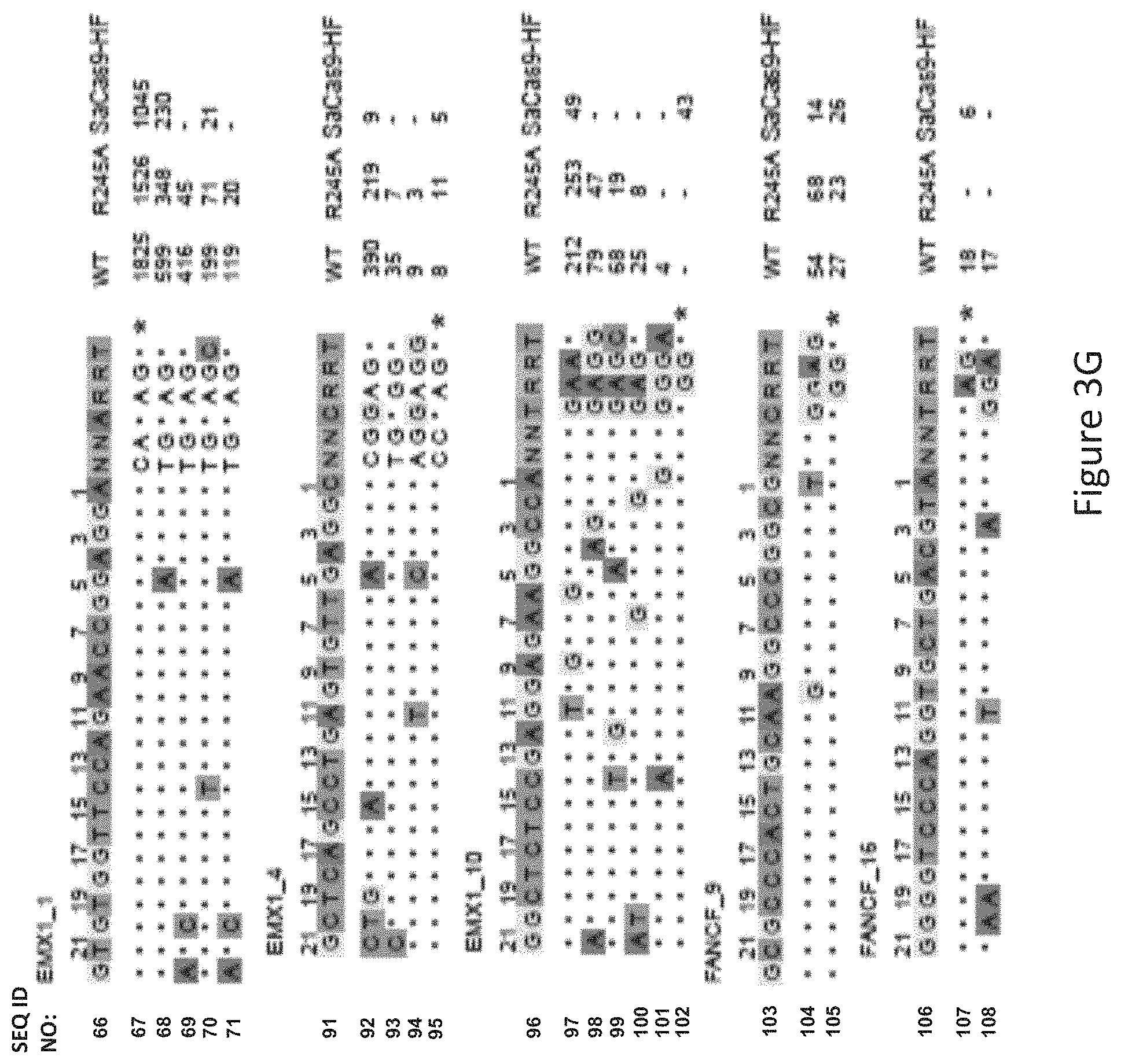
D00014
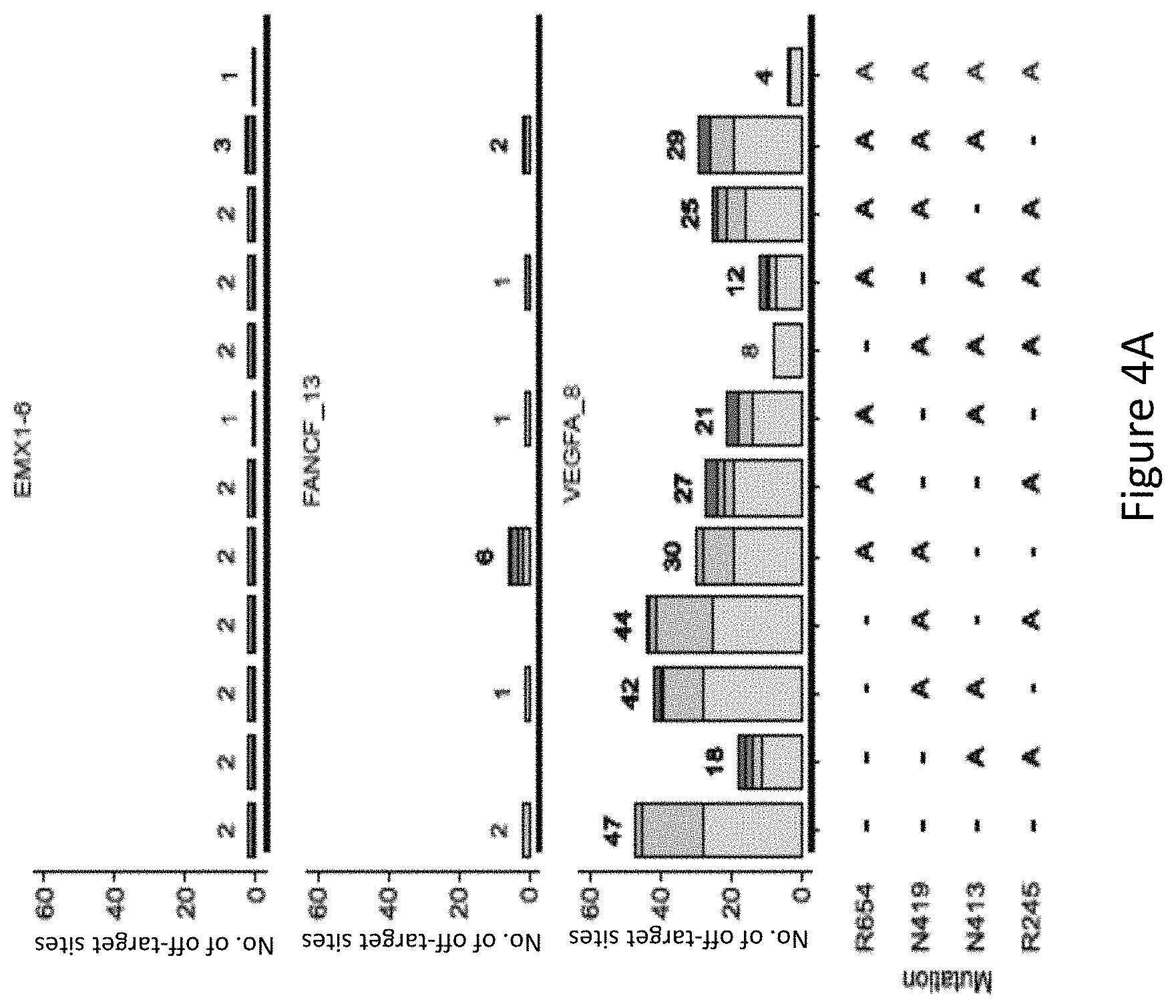
D00015
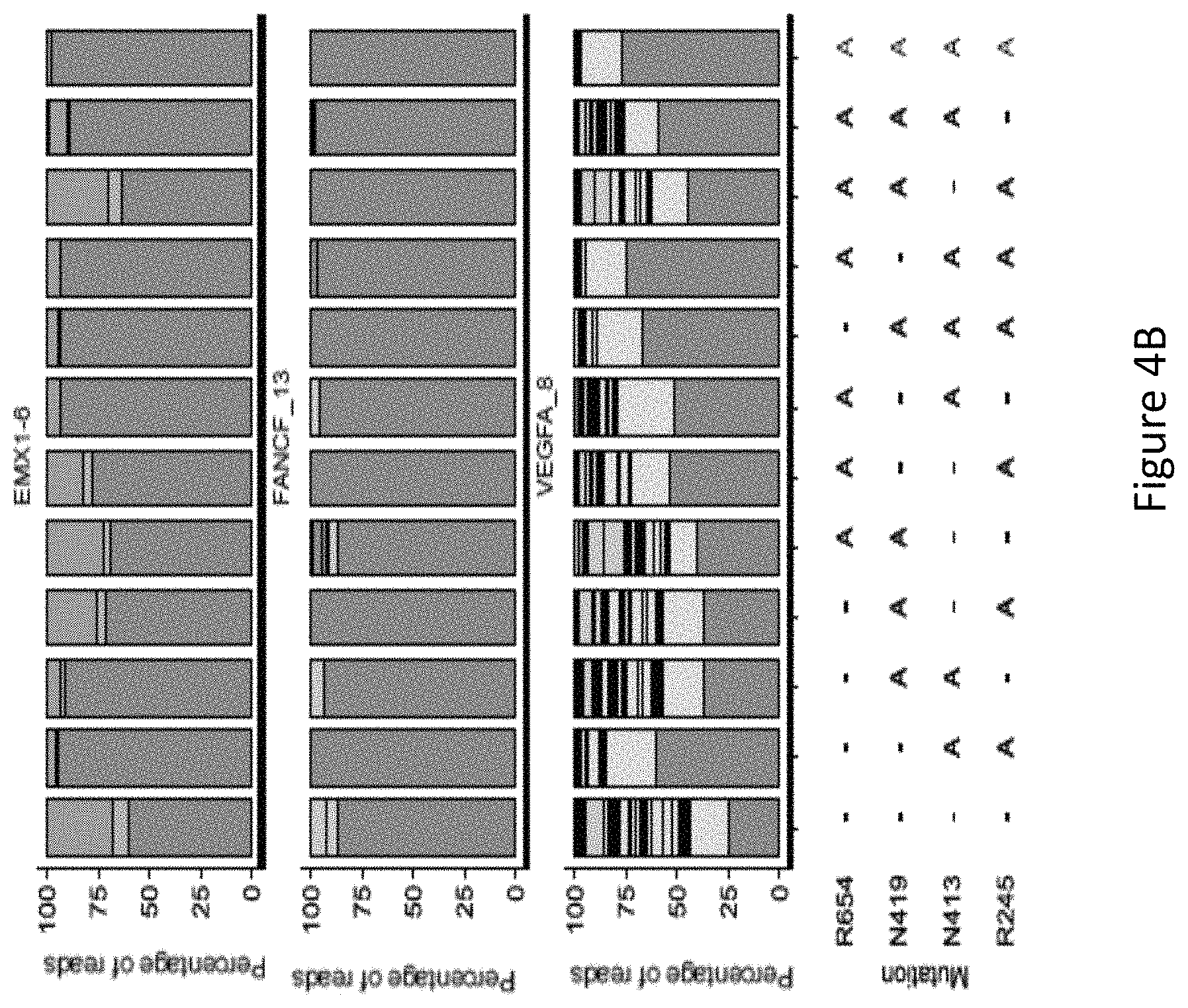
D00016
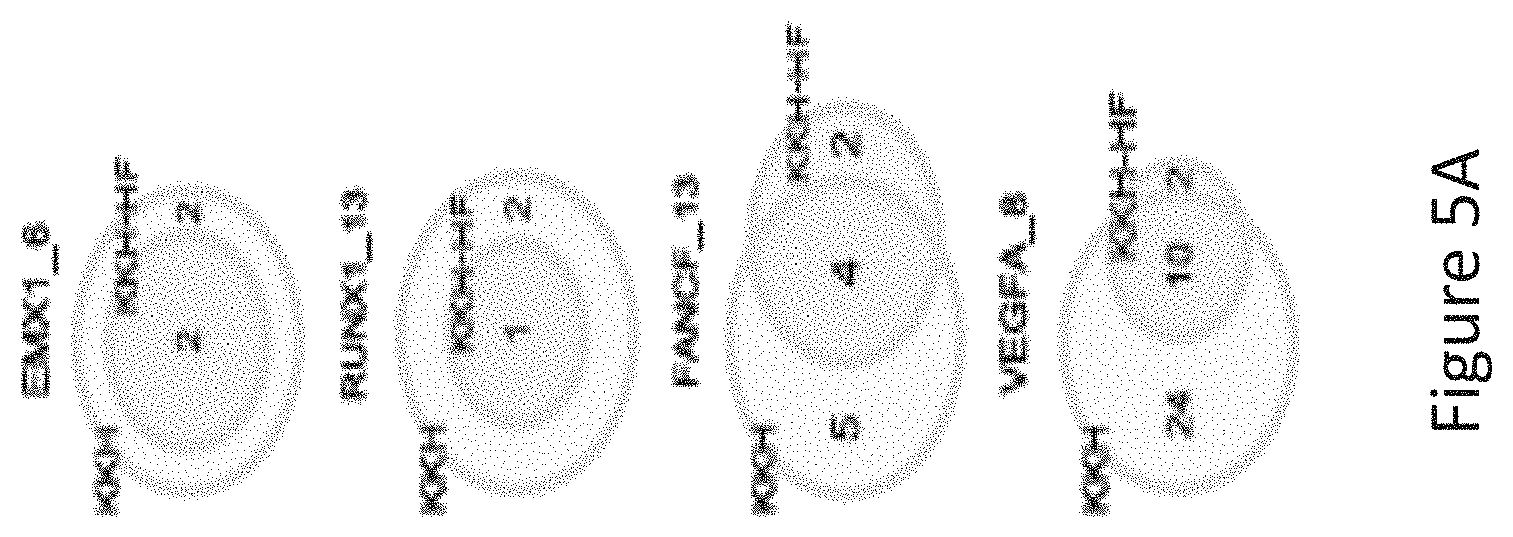
D00017
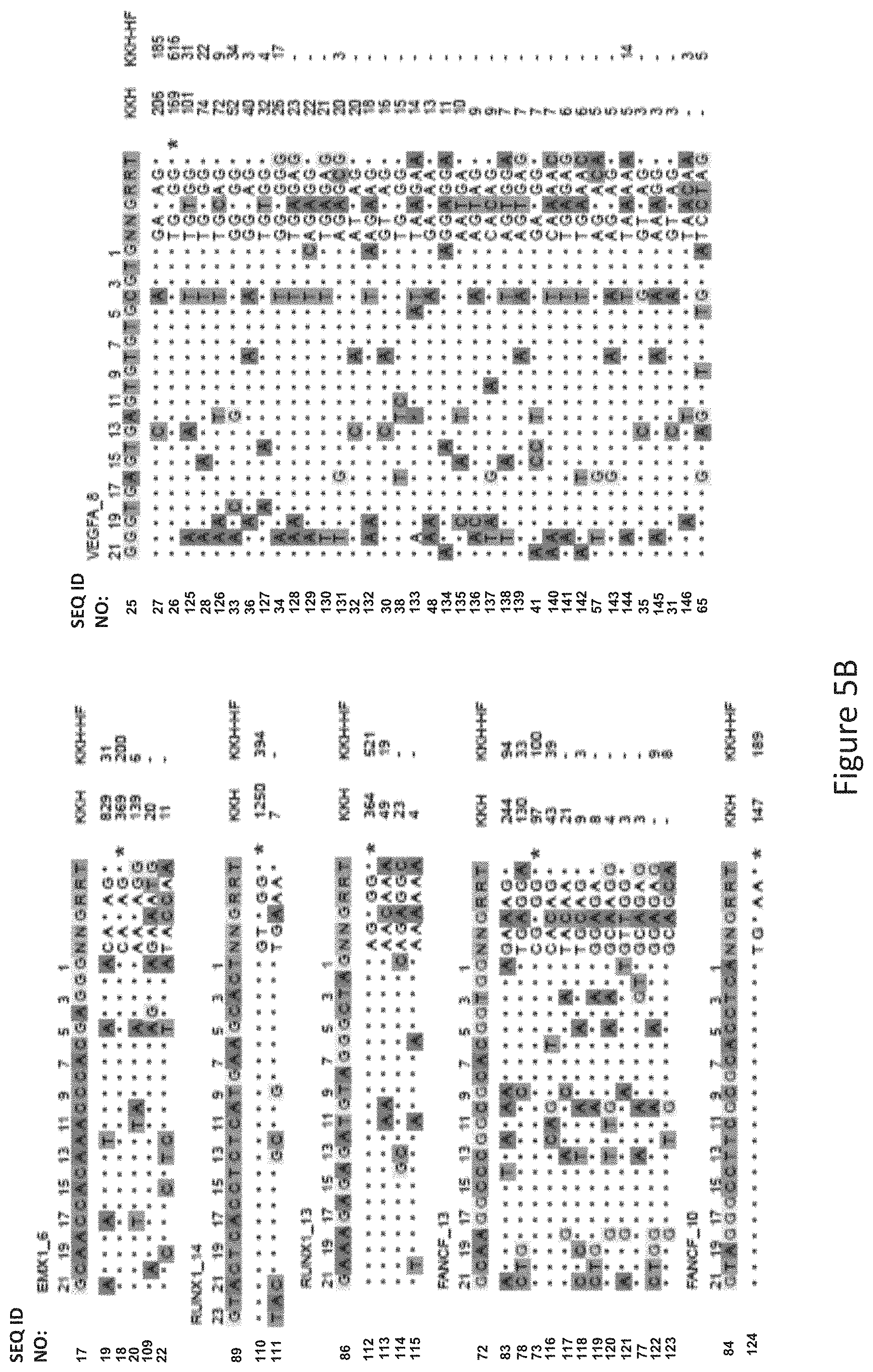
D00018

D00019
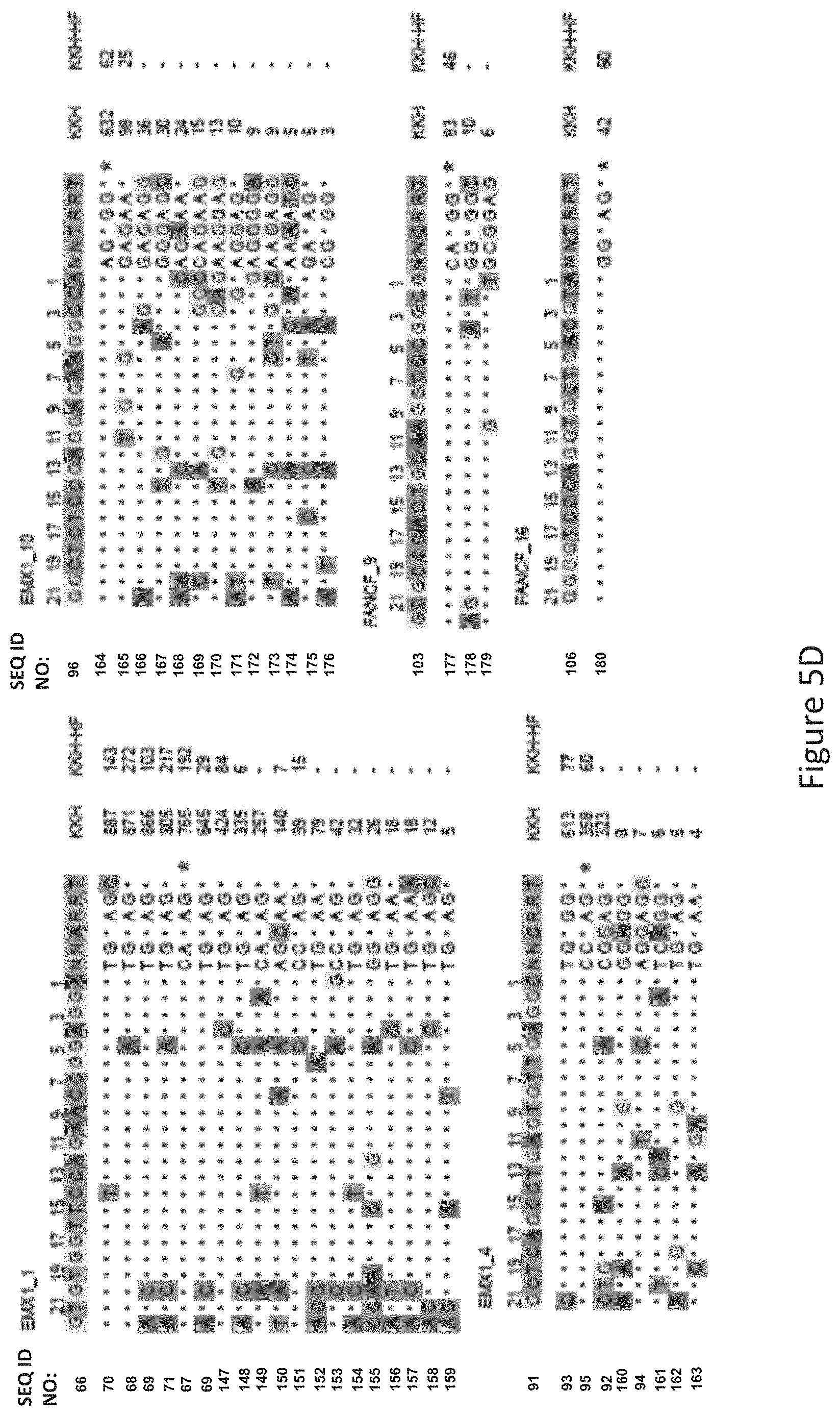
S00001
XML
uspto.report is an independent third-party trademark research tool that is not affiliated, endorsed, or sponsored by the United States Patent and Trademark Office (USPTO) or any other governmental organization. The information provided by uspto.report is based on publicly available data at the time of writing and is intended for informational purposes only.
While we strive to provide accurate and up-to-date information, we do not guarantee the accuracy, completeness, reliability, or suitability of the information displayed on this site. The use of this site is at your own risk. Any reliance you place on such information is therefore strictly at your own risk.
All official trademark data, including owner information, should be verified by visiting the official USPTO website at www.uspto.gov. This site is not intended to replace professional legal advice and should not be used as a substitute for consulting with a legal professional who is knowledgeable about trademark law.